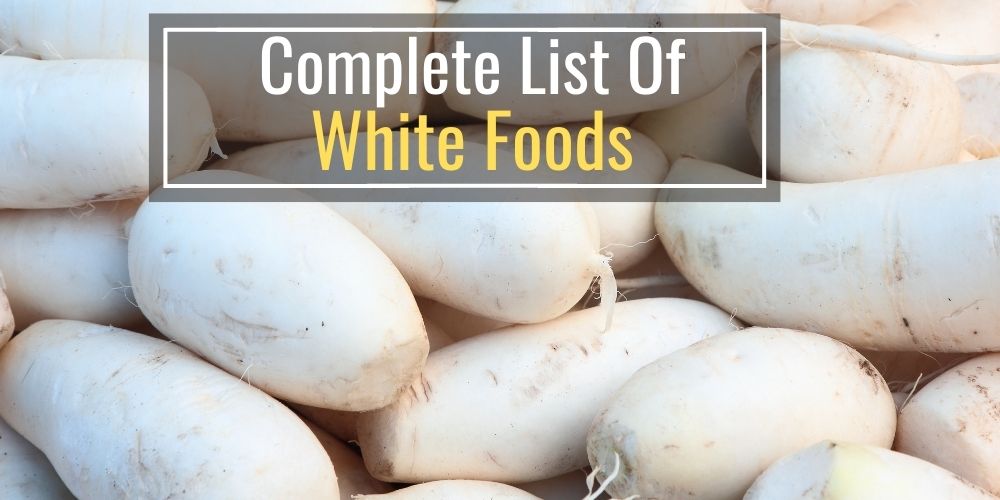With so many different types of foods in the world, it can be difficult to think of all the foods that are the color white.
That’s why we’ve compiled a list of all the foods that are the color white which include chicken breast, cauliflower, and potatoes.
So come learn about all the foods that are the color white and see if you were able to think of them all!
We have listed all the white foods on the list in alphabetical order to make it easier for you to search for the food you’re thinking of.
Here is a list of all the different food-colored lists with pictures if you’re looking for other colored foods:
1. Almonds
The first white food on our list is almonds.

The fruit of the almond tree, called the almond, is a type of nut native to West Asia. Almonds are oval with pointed ends and have a brown exterior.
However, the inside of almonds is white in color.
Almonds are a storehouse of fiber, protein, and healthy fats.
You can consume them raw or roasted or use them in recipes (both sweet and savory).
2. Almond Milk
The next food that is the color white on our list is almond milk.
Almond milk was first consumed in Southern Europe more than 1,000 years ago.
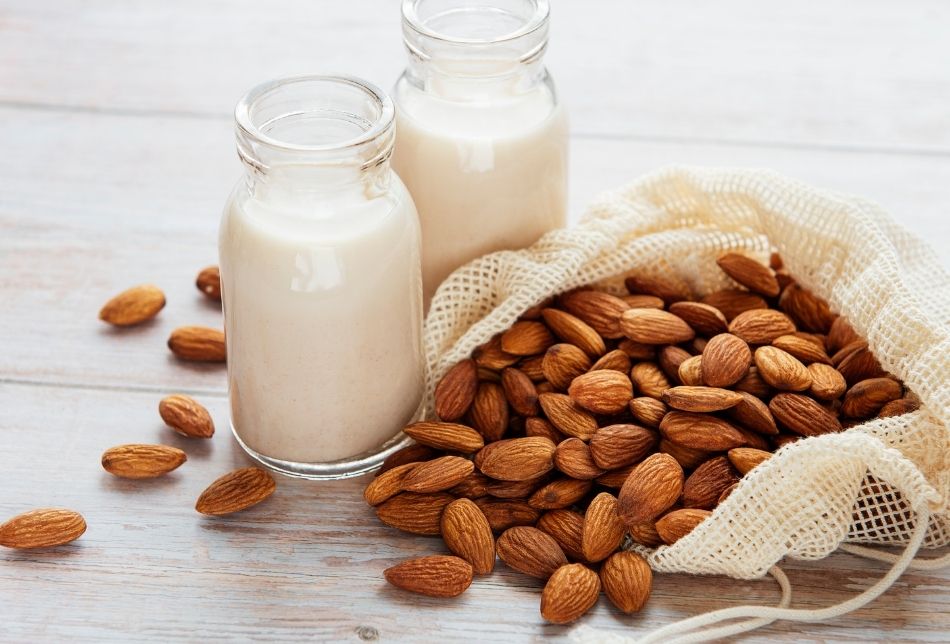
Almond milk is a plant-based beverage made from almonds and has a watery texture with a nutty flavor.
It is low in saturated fat and is free of lactose and cholesterol.
Vitamin E is found abundantly in almond milk. Additionally, it includes potassium, vitamin A, vitamin D, magnesium, and calcium and has a higher nutrient profile.
3. Animal-based Fats
Animal-based fats were first used in Egypt in 5000 BC.
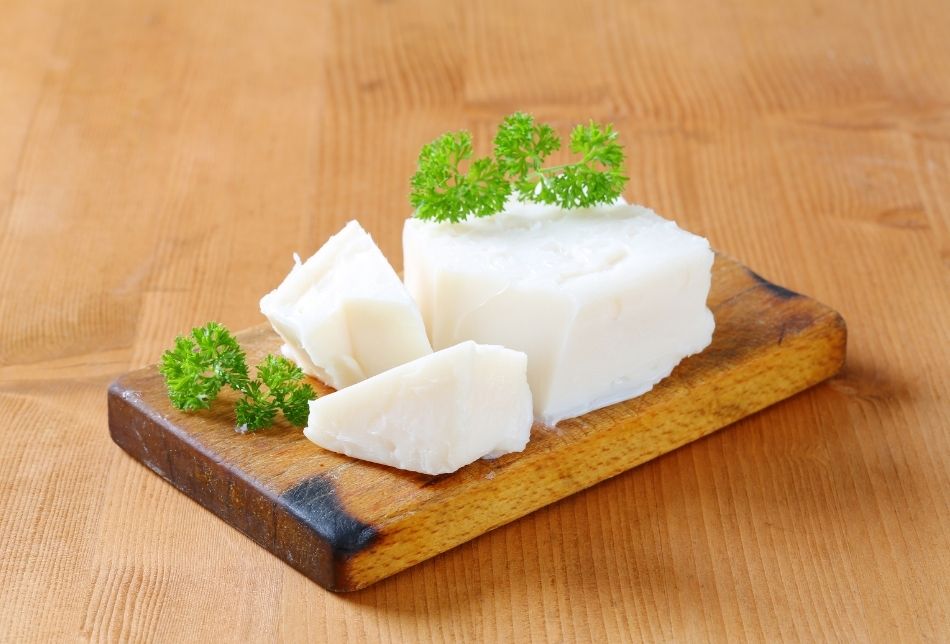
These fats are further classified into fish oils, rendered fats, and milk fats. Generally, they contain high amounts of saturated fat with trace amounts of iron, calcium, potassium, and Vitamin D.
Examples of animal-based fats include lard, tallow, and the fats you can see on cuts of beef, pork, or chicken.
Fact: Because they are heavy in saturated fat, animal-based fats should be used sparingly. The American Heart Association advises limiting daily saturated fat intake to 13 grams.
4. Bananas
Botanically a berry, bananas are elongated fruits that are the color yellow on the outside but have a white interior.
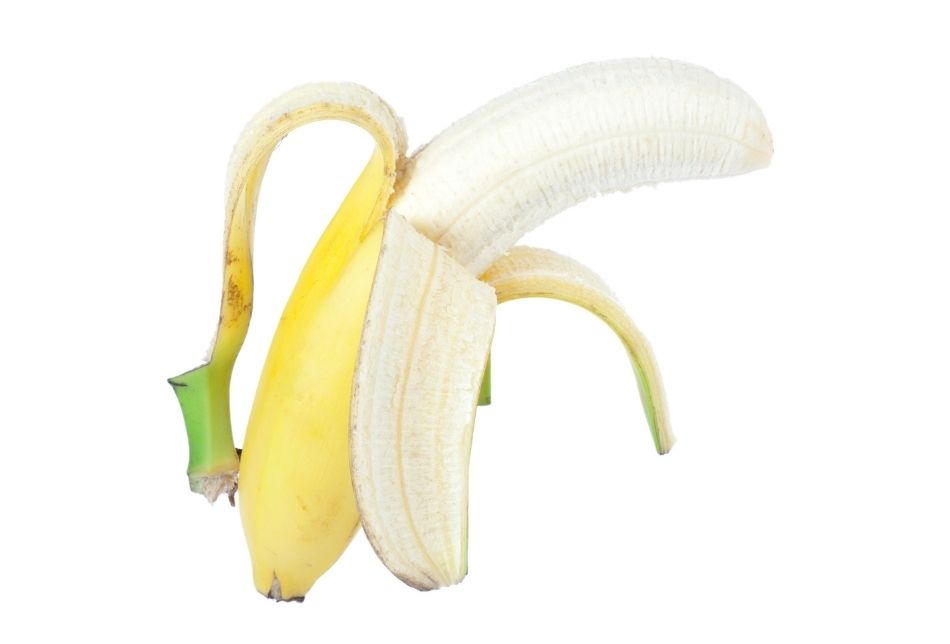
Bananas were first grown in Southeast Asia and the Indian subcontinent. Traders and explorers then introduced them to Africa, the Americas, and Australia.
Bananas are a wonderful source of dietary potassium, fiber, vitamin C, and vitamin B6.
It is estimated that a medium-sized banana has about 105 calories and is filling and satisfying.
Fact: Today, bananas are grown in more than 107 countries and are one of the most popular fruits in the world.
5. Bavarian Veal Sausage Chain
The Bavarian Veal Sausage Chain is more popularly known as Weisswurst.
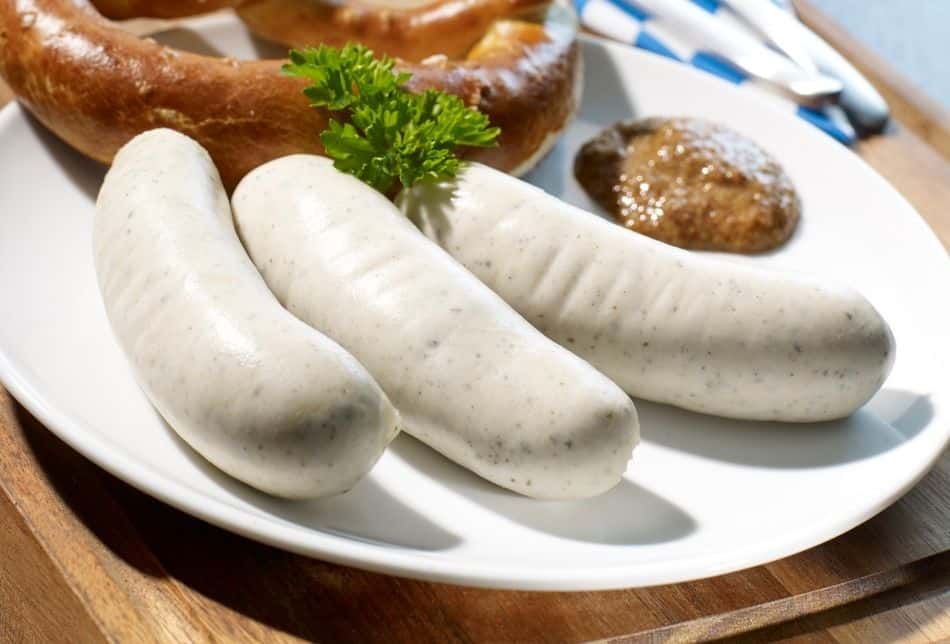
This Bavarian sausage is created from veal, bacon, and minced pork back. It originated in Southern Germany.
This German morning sausage has flavors of lemon zest, parsley, onions, mace, ginger, and cardamom. They are a good source of protein.
These sausages are extremely perishable because there is no preservation process used.
6. Black-eyed Beans
The medium-sized, black-eyed bean is a subspecies of the Old World plant known as the cowpea, which was domesticated in Africa.
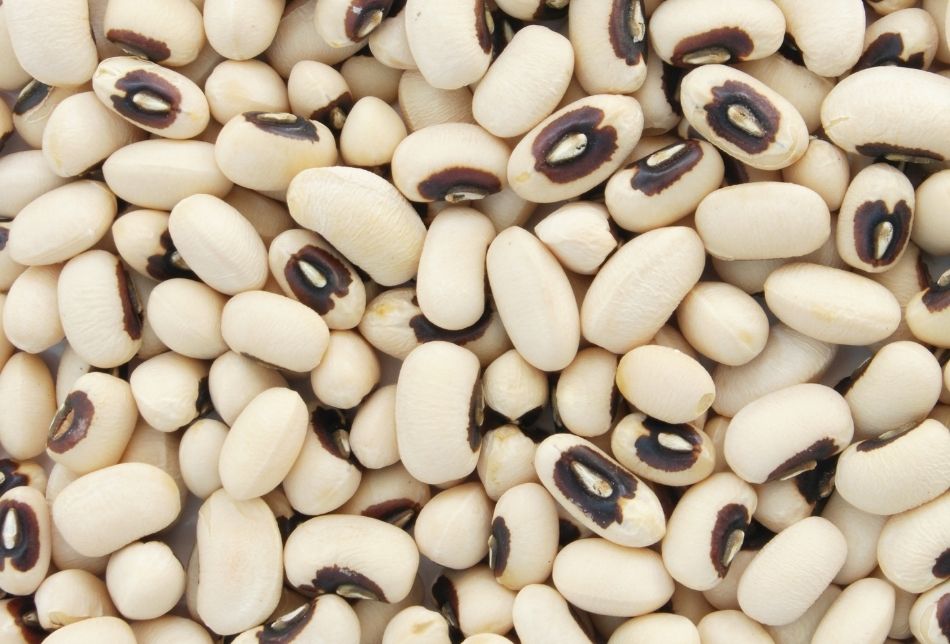
These legumes have a light cream tint with a prominent eye-like black, brown, or red spot.
Each serving of black-eyed peas has a significant amount of fiber and protein, making them nutrient-dense.
Additionally, black-eyed beans are a good source of a number of essential micronutrients, such as folate, copper, thiamine, and iron.
7. Cashew Nut
The next food that is white on our list is the cashew nut.
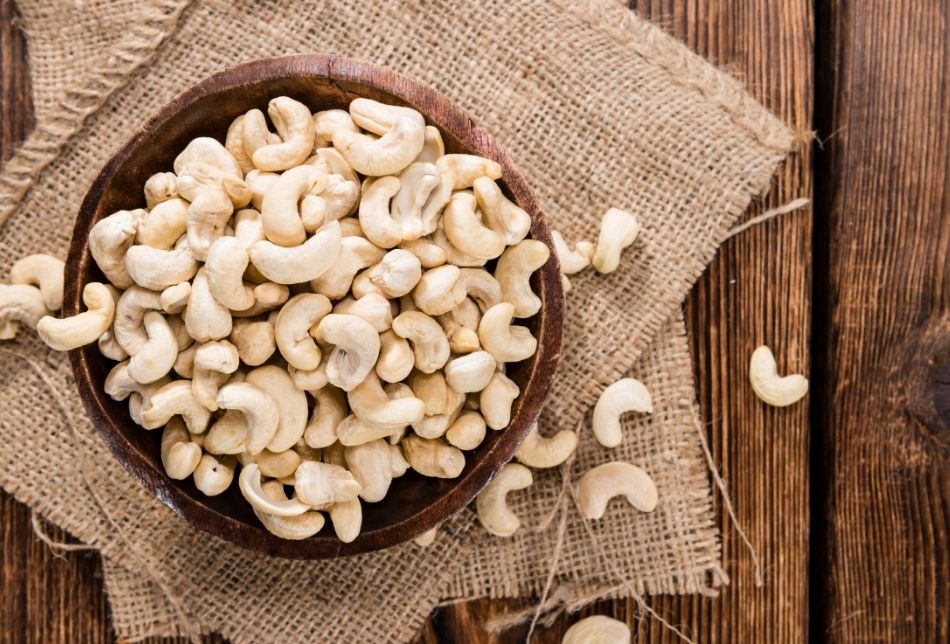
The cashew nut is not a nut but a seed of the cashew apple that grows on evergreen cashew trees.
The species originally came from Northeastern Brazil and Southeast Venezuela, but Portuguese explorers later spread it over the world in the 1500s.
They are frequently used as a snack (cashew nut), cooked into cashew cheese or cashew butter, or consumed on their own. These nuts also provide protein.
8. Cauliflower
Cauliflower belongs to the cruciferous vegetable family with Brussels sprouts, kale, cabbage, and collard greens.

These vegetables are known for their health-promoting properties. Cauliflower contains fiber, vitamins C and K, folate, and manganese. It is also rich in phytonutrients that can help protect against cancer.
Cauliflower originated in the Mediterranean and was later introduced to India and other parts of Asia.
9. Chickpeas
Another bean that is the color white is the chickpea or garbanzo bean.
Garbanzo beans are neither peas nor beans; they are usually referred to as chickpeas and are a type of legume rich in protein and fiber.
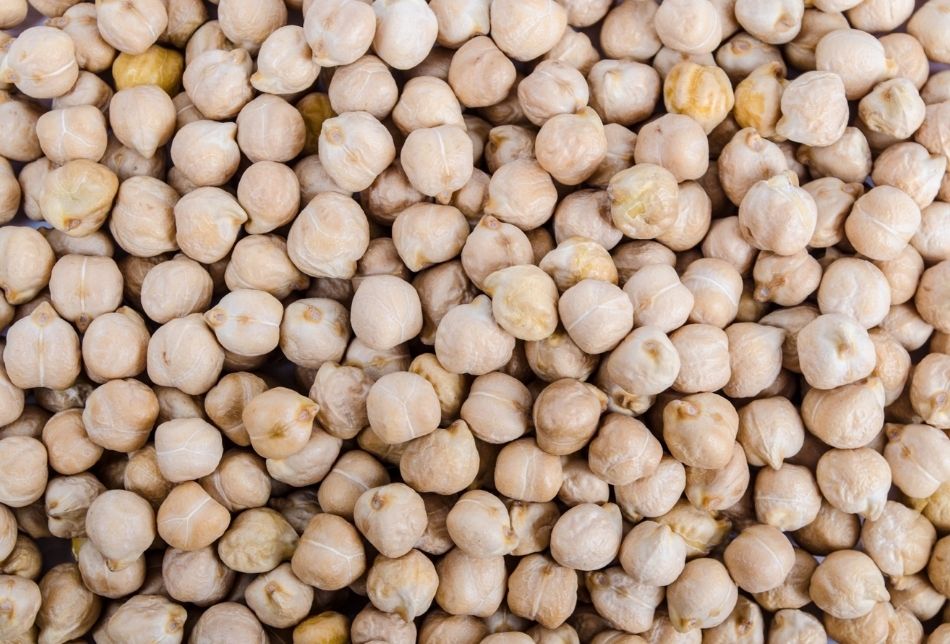
These beans have a modest size and a pale white tint.
Additionally, they are a good source of manganese, folate, and vitamins C and K. They are known for decreasing cholesterol and controlling blood sugar.
Chickpeas originated in Turkey but are a widely-used ingredient in many cuisines today, including Indian, Pakistani, Middle Eastern, and Mediterranean food.
10. Clarified Butter (Ghee)
Clarified butter is milk fat that has its origin in India. It is prepared by separating fat from the butter while removing water and the milk solids.
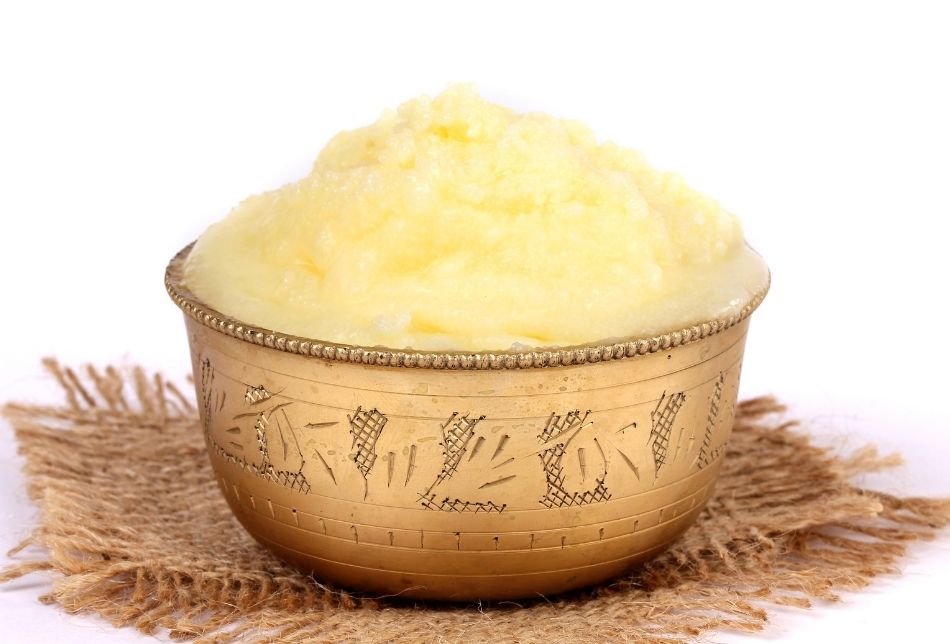
This butter, which has 82 percent butterfat, is produced by churning pasteurized buffalo cream. Ghee is a good source of omega-3 fatty acids and vitamins A, E, and D.
You can use ghee for cooking. It has the additional benefit of tasting great and releasing rich flavors when sautéed or fried, but it’s also good as a finishing oil because you’ll get an extra dose of healthy fats.
Each 100 g serving of clarified butter (ghee) has 900 calories.
11. Coconut Meat
Coconut meat is the white and creamy filling that lies within a coconut. It comes from the coconut tree, a native of the Indo-Malaya region.
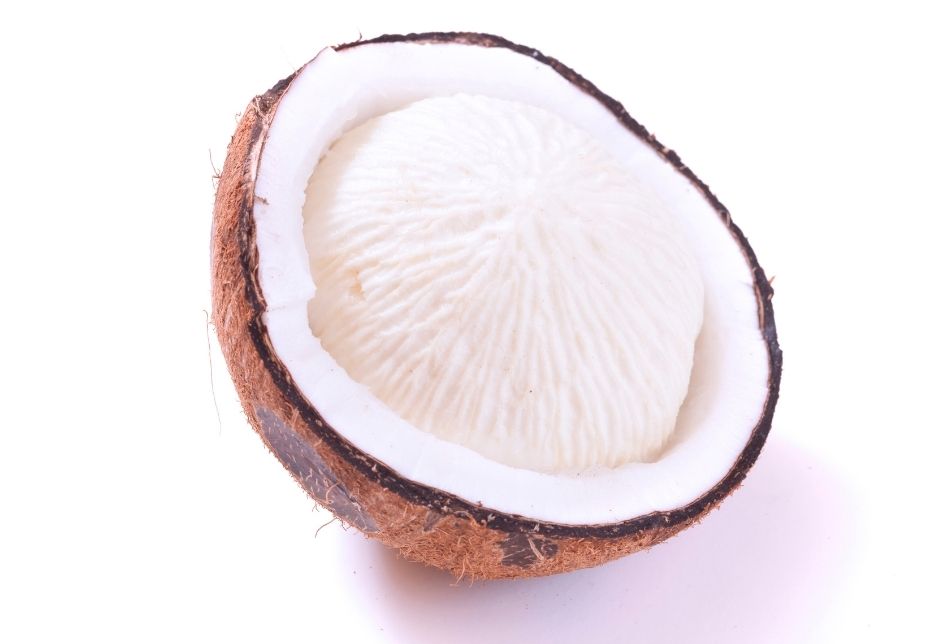
Coconut meat is a good source of MCTs and fiber and provides a significant amount of vitamins and minerals, namely, iron, potassium, and magnesium.
Fact: Coconut meat is used to create coconut oil, cream, and milk. It can be ground into a dried powder for use in recipes.
12. Coconut Milk
Another coconut product that is the color white is coconut milk.
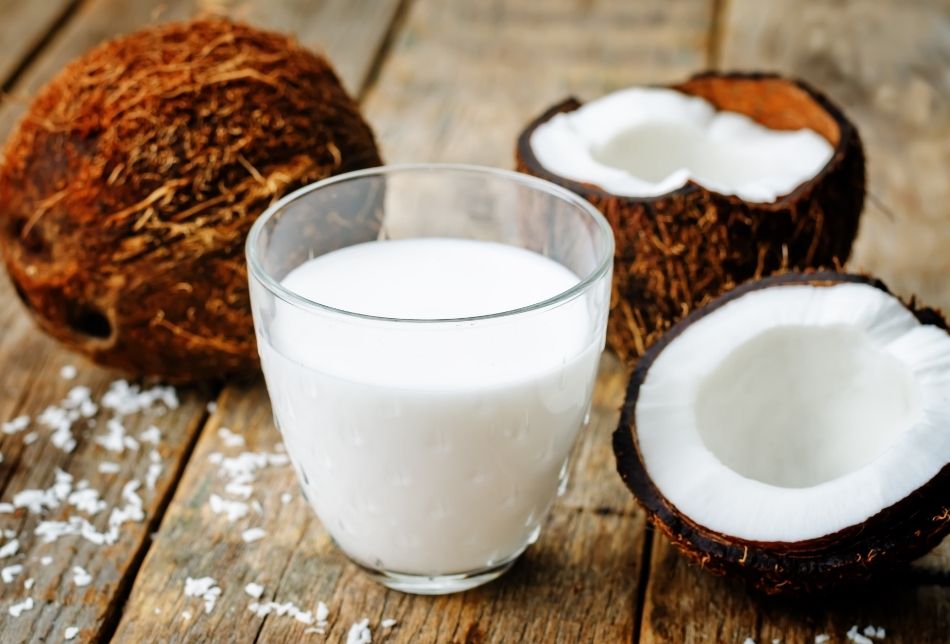
Coconut milk is mostly used as a dairy-free alternative to cow’s milk. It is a milky white liquid made by blending water with the grated flesh of a coconut.
Coconut milk is known for its creamy texture and sweet, nutty flavor.
It is rich in vitamins, minerals, and healthy fats and can be used in sweet and savory dishes.
It is a traditional milk alternative from South Asia, East Africa, Oceania, and Southeast Asia.
13. Daikon
Daikon, also known as winter radish, is a root vegetable resembling a giant carrot with a mild red radish flavor.
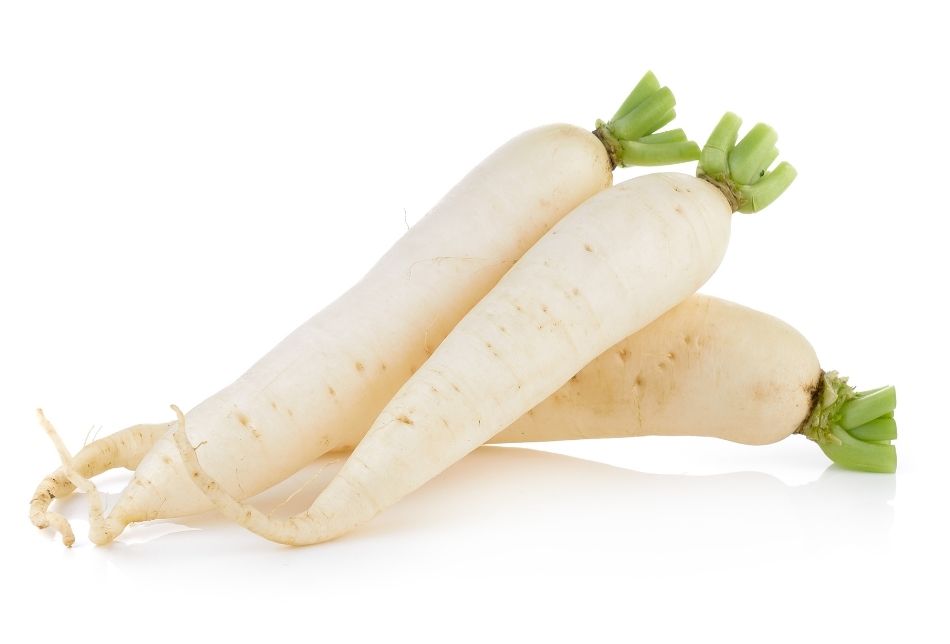
Daikon radishes are popular in Asian cuisine and can be found pickled in vinegar and eaten as a side dish.
The daikon radish was first produced in China and is the most consumed vegetable in Japan. You can eat daikon raw, add it to salads or prepare smoothies and soups.
Daikon is rich in nutrients like calcium, magnesium, potassium, and copper, among others.
It also contains digestive enzymes that aid the body in breaking down carbohydrates, lipids, and proteins.
14. Egg Whites
Egg whites or albumen, the clear liquid inside the shell, have high-quality protein. They have little fat and few calories.
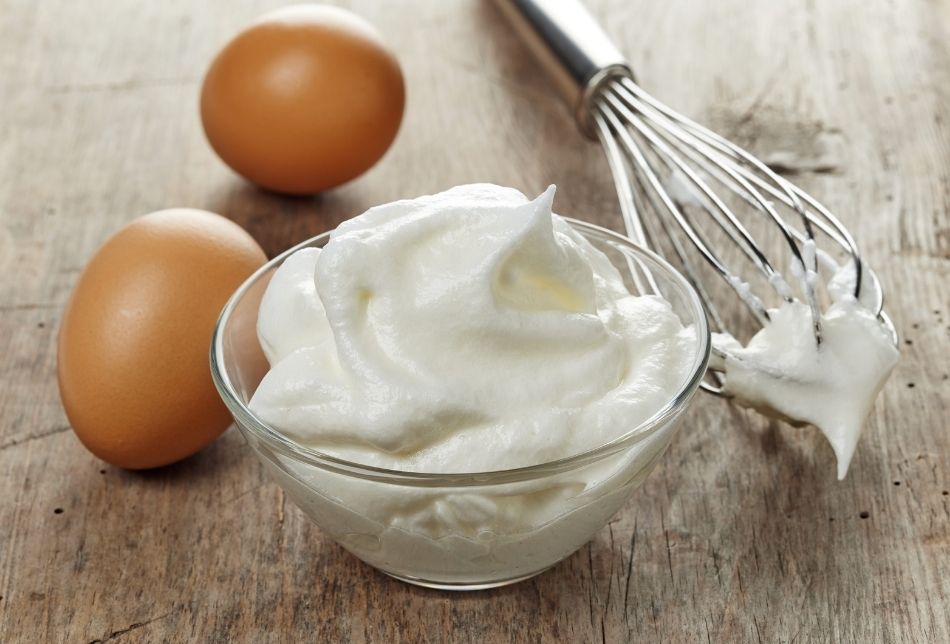
Although egg whites may appear translucent or clear at first, egg whites will turn white when beaten, whisked, or cooked.
Vitamin B12, riboflavin, and selenium are all found in egg whites.
These are good sources of phosphorus, potassium, and magnesium minerals.
Egg whites can be added to omelets, scrambles, and soups, among other dishes. They can be utilized to create homemade egg white protein powder.
Interesting Fact: An egg white is lower in calories than an entire egg.
15. Garlic
The next white food on our list is garlic.
Garlic has been used for centuries in both cooking and medicine. However, it first appeared in Central Asia.

Garlic is from the onion family and is used as a spice in many cuisines. It has a sweet and nutty flavor and is known for its health-promoting properties.
The vitamins C and B6, as well as the minerals phosphorus, selenium, and manganese, are all present in garlic in good amounts.
About four calories are included in one garlic clove.
16. Honey Lavender Popsicles
Honey lavender popsicles are a tasty and nutritious treat. The ingredients for these popsicles are honey, lavender, and either yogurt or milk.
The yogurt or milk is what gives these popsicles their predominately white color.
Honey lavender popsicles also contain calcium, vitamin D, and protein. Popsicles with honey and lavender have few calories and fat.
They contain only 67 calories.
17. Jicama
Jicama is a root vegetable having a globe-shaped brownish skin and white flesh. It is crunchy and has a slightly sweet taste.
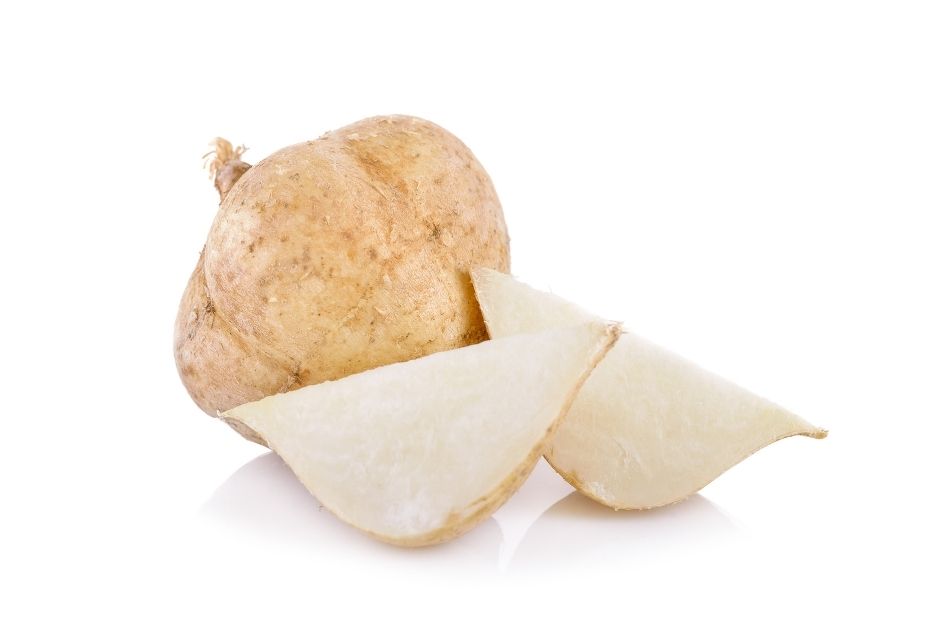
Jicama is low in calories and carbs and a good fiber source. It also contains vitamins C and minerals such as magnesium and manganese.
You can eat Jicama raw or use it in salads, stir-fries, and as a topping for tacos.
18. Kefir
Kefir is fermented milk that originated in the Caucasus Mountain region.
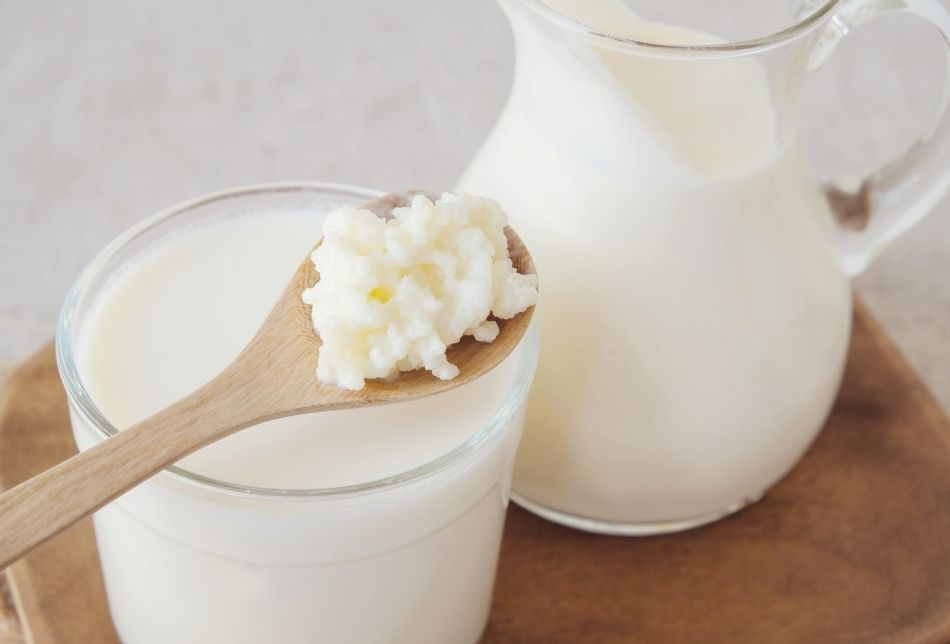
It is made from kefir grains placed in milk and allowed to ferment.
Kefir is rich in protein, calcium, and vitamins B12 and D. It also contains probiotics that benefit gut health.
Homemade kefir is easy to make and can be flavored with fruits, herbs, and spices. You can also use it in baking or add it to smoothies.
19. Kohlrabi
Although kohlrabi appears to be a root vegetable, it is linked to cabbage and has a taste and aroma similar to broccoli. This makes it a fantastic substitute for turnips or radishes.

Kohlrabi is a bulbous vegetable that can be white, green, or purple. It is encircled by two layers of stiff leaves joined together in a rosette, much like cabbage.
Once peeled or sliced, the kohlrabi has a bright white interior.
This cruciferous vegetable contains plenty of vitamin C, B6, potassium, magnesium, manganese, folate, and fiber.
20. Lean Chicken
Meats having a low-fat content are referred to as lean meats. Lean meat options include skinless chicken, skinless turkey, and red meat like pork chops with the fat removed.
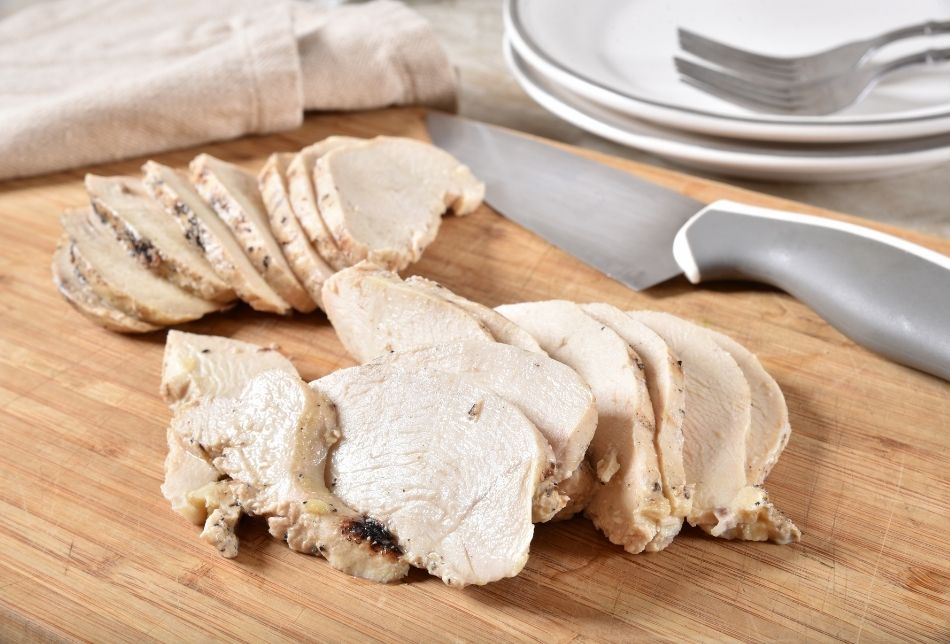
Lean meat is rich in protein and essential vitamins and minerals, including zinc, vitamins A, and B. Additionally, it is an exceptional source of niacin, iron, and selenium.
Cooked chicken breast will have a pale or white interior that is low in fat content.
Raw chicken, turkey, and other “white meats” don’t change color upon cooking.
Fact: Three ounces of lean meat has 92 calories.
21. Mayonnaise
The French chef for the Duke of Richelieu created mayonnaise in 1756.
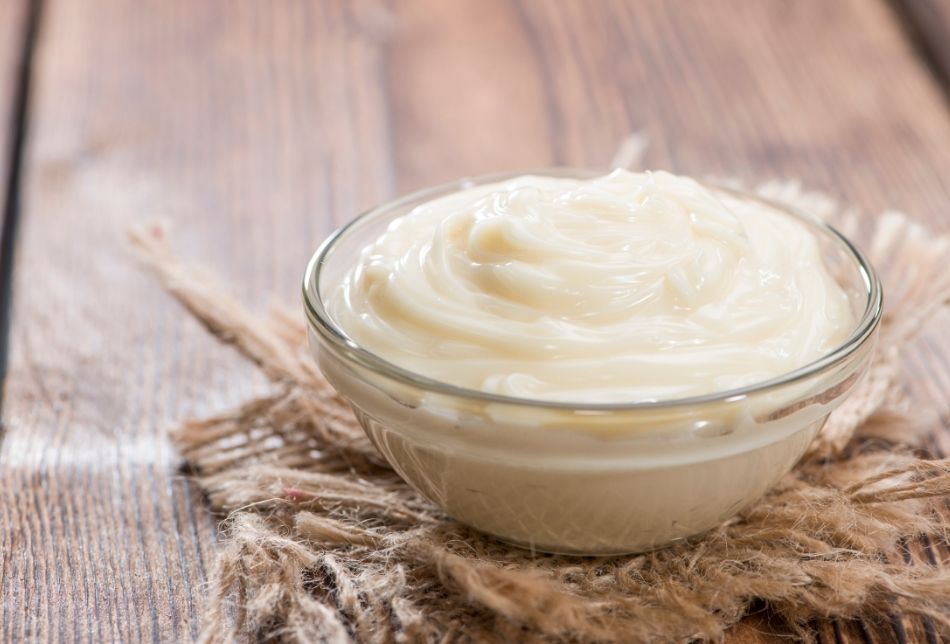
The sauce or dressing, known as mayonnaise, or simply “mayo,” is a thick, cold, and creamy spread frequently used on sandwiches, hamburgers, mixed salads, and French fries.
Mayo is white in color due to the eggs used to create this creamy spread or dipping sauce.
It has nutrients like Vitamin E and omega-3. One teaspoon of mayonnaise has 31 calories.
22. Milk
Milk is a creamy white liquid that’s produced by the mammary glands of mammals.

It is a source of nutrition for young animals and contains proteins, fats, carbohydrates, vitamins, and minerals.
A cow’s milk is the most popular type of milk consumed in the world. It is a good source of protein, calcium, and vitamin D.
You can consume milk fresh or pasteurized, and it can also be made into several products, such as cheese, yogurt, and butter.
23. Mushrooms
Mushrooms are a type of fungi that come in a variety of shapes, sizes, and colors, including white. They can be found thriving in the wild or cultivated.

Mushrooms make an impeccable ingredient in many dishes, such as soups, stews, and stir-fries.
These umbrella-like foods are a good source of vitamin D and copper. Mushrooms are also rich in antioxidants that can help protect against cell damage.
The French botanist Joseph Pitton de Tournefort is often given credit for cultivating white button mushrooms in 1707, though they’ve been around since ancient times.
24. Oats
Oats are whole-grain cereals believed to have originated in Asia Minor. They are an exceptional source of fiber and contain vitamins, minerals, and antioxidants.
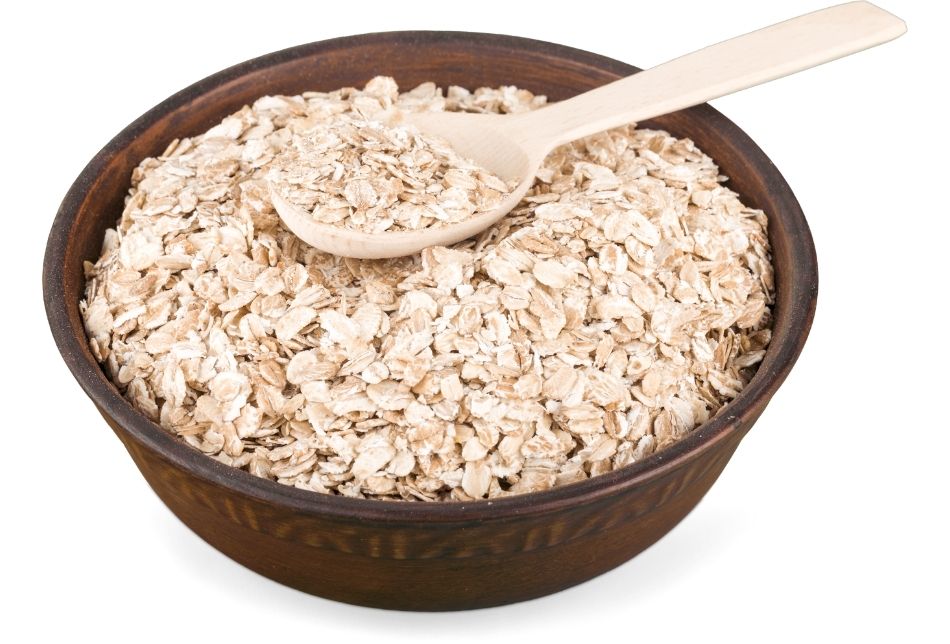
Oats are often used in breakfast cereals, granola bars, oatmeal cookies, and muffins.
There are a lot of health benefits of eating oats. These are mostly decreased blood sugar levels, weight loss, and a lower risk of heart disease.
Interesting Fact: An oatmeal bath is one of the most impeccable natural beauty products.
25. Onion
Onions are root vegetables that originated in South Asia and are cultivated around the world.
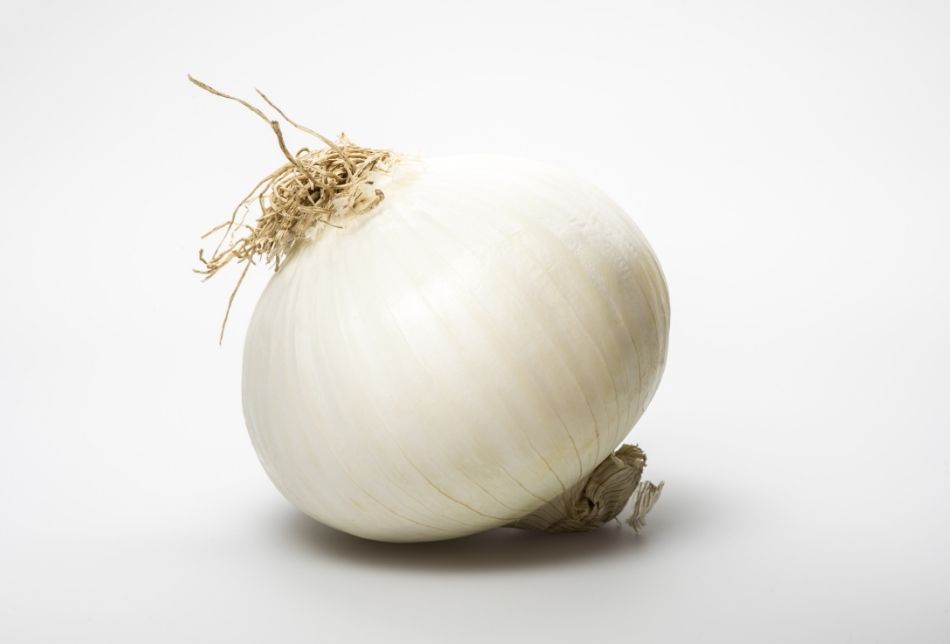
Onions come in several colors, including white, yellow, and red, and the peels are pinkish.
Onions are an impeccable source of vitamins C and B6 and the minerals phosphorus and manganese. Onions can be consumed raw, cooked, or pickled.
They are frequently used as a flavoring agent in soups, stews, sauces, and various other recipes.
26. Parsnip
Parsnips are closely related to carrots and parsley and are a native of Eurasia.
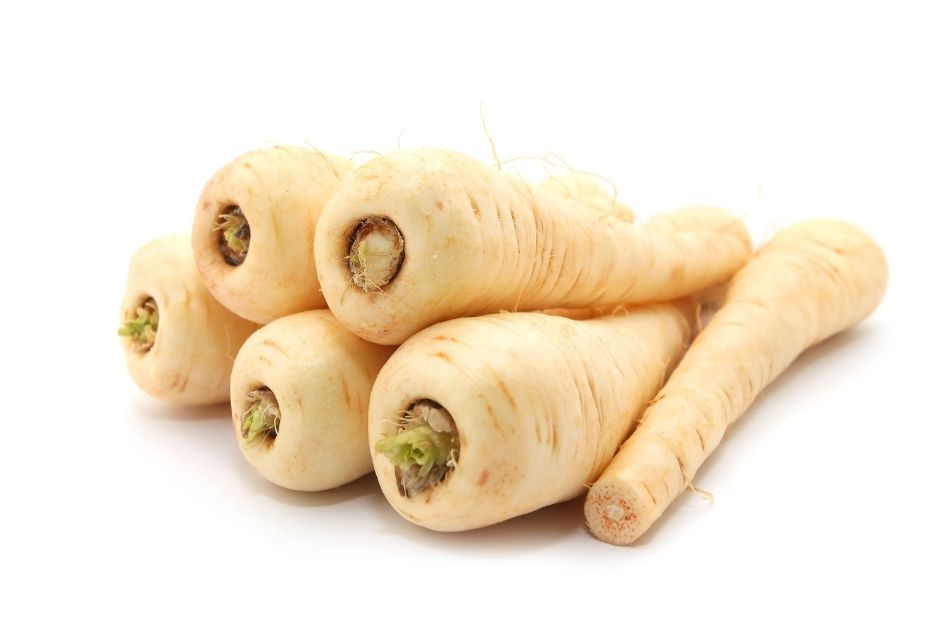
They have a creamy white color and a sweet, nutty flavor.
Parsnips are a delicious source of fiber and vitamins C and K. They contain potassium and manganese minerals.
Parsnips are often roasted, mashed, or added to soups and stews.
27. Pears
The white pear was first grown in China and Asia Minor. It is a pome fruit, globose or ovoid.
Their taste is a perfect blend of pineapple and rose.
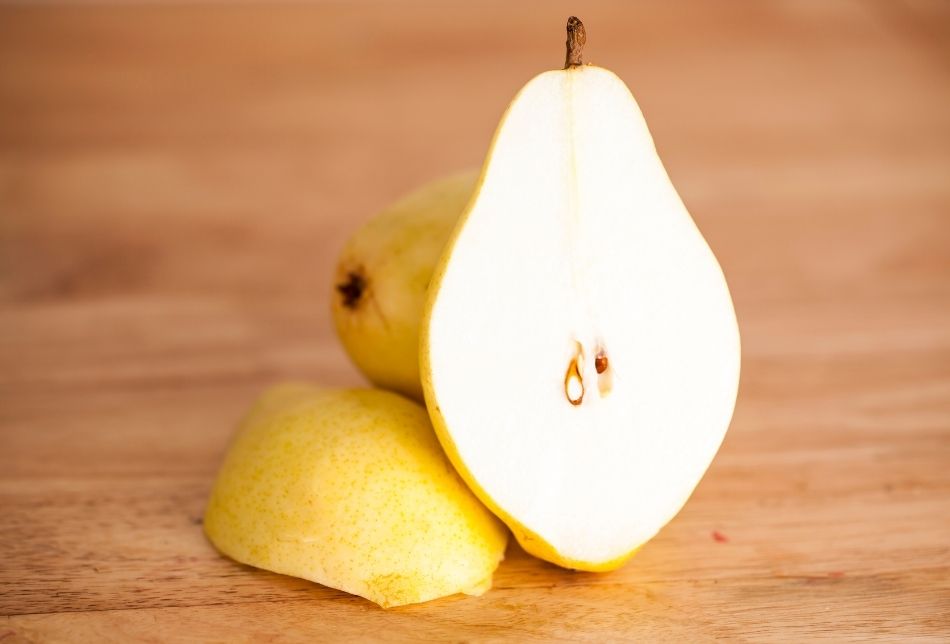
Not to mention regular pears have a light yellow or white interior regardless of the pear’s skin color.
A pear has a fibrous interior and is a soft, sweet fruit. They are abundant in dietary fiber, plant chemicals, and essential antioxidants.
Pears include a significant quantity of fiber, which helps you feel full and maintains the health of your gut and heart.
28. Popcorn
A movie theater favorite, popcorn is the next white food on our list.
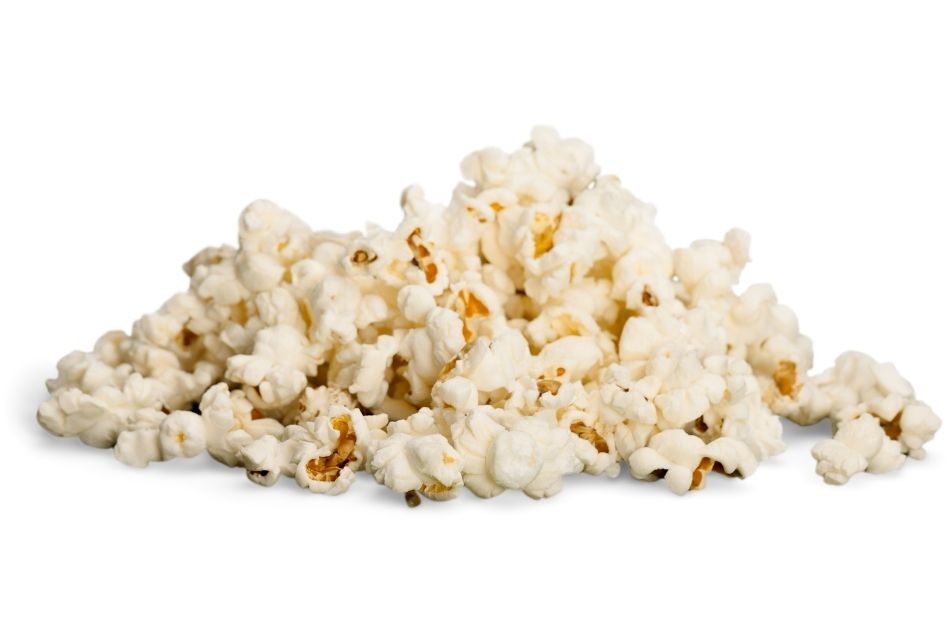
Popcorn is believed to be first discovered in Mexico approximately 5600 years ago. The fluffy popcorn that we all know and love is made by heating a corn kernel until it expands and pops.
Popcorns are made from whole grains and are a good source of fiber.
Popcorn can be flavored with salt, butter, or sugar and popcorn can also be eaten plain.
Popcorn can be a relatively healthy snack if you don’t top your popcorn off with a ton of salt and butter.
One cup of popcorn has approximately 30 calories and is a good source of fiber and antioxidants.
29. Potatoes
A potato is a root vegetable originally from Peruvian-Bolivian Andes.
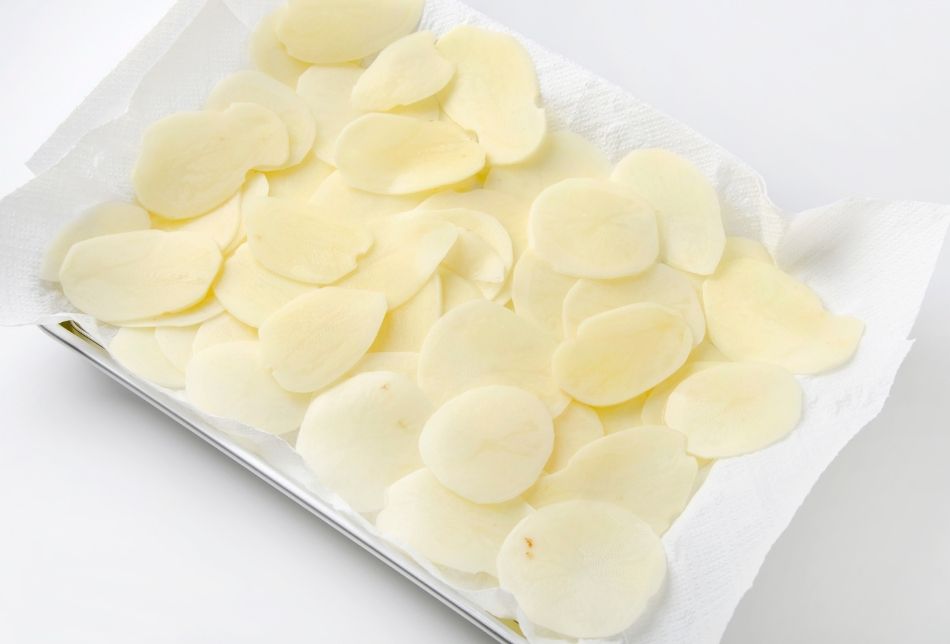
It is a starchy tuber that grows in temperate climates. Potatoes are an impeccable source of vitamins C and B, besides having a good amount of fiber.
Potatoes come in all different shapes, sizes, and colors including white.
Generally, sliced potatoes will have a light yellow or white interior, especially when thinly sliced.
You can eat them by microwaving, baking, or cooking on flames. They are also known for making delectable side dishes and soups.
30. Roasted Pumpkin Seeds
Roasted pumpkin seeds are delicious, flat, oval-shaped seeds that have origins in Mexico.
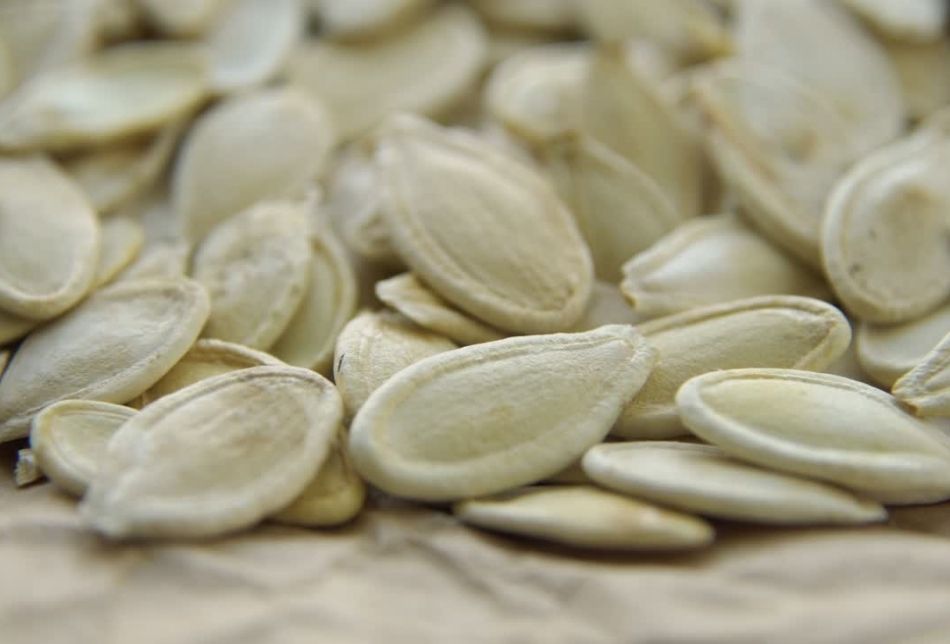
Pumpkin seeds are located in the center of the pumpkin fruit. They can be rinsed after being separated from the flesh and then roasted to make a tasty, crispy snack.
Once roasted, the pumpkin seeds will turn a white or light tan color.
Healthy oils, magnesium, and other minerals that improve the health of the heart, bones, and other organs can be found in pumpkin seeds.
Roasted pumpkin seeds weigh 100 grams and have 446 calories.
31. Salt
The most commonly used seasoning in the world and the next white food on our list is salt.

Salt can be used to flavor food or as a preservative. Egyptians are known as the first to discover the preservation power of salt.
The recommended daily salt intake is no more than 2000 mg or about one teaspoon. Salt is a mineral that has sodium and chloride as its two major components.
Although it is necessary for life, too much salt can raise blood pressure and increase the risk of heart disease and stroke.
Interesting Fact: Salt was so highly prized in ancient Rome that soldiers were occasionally paid for it. The word “salary” is taken from the Latin word sal, which means salt.
32. Sorghum
Sorghum is a member of the Poaceae genus of grass. It was first discovered in Africa.
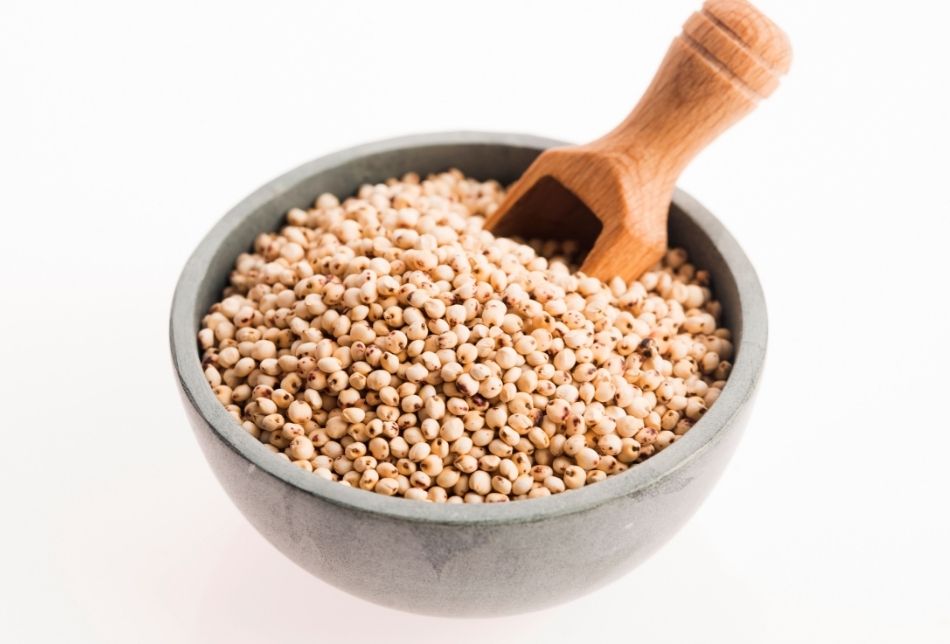
Although some variants are red, brown, black, or purple, sorghum is typically small, spherical, and white or pale yellow.
Sorghum is an amazing source of B vitamins, magnesium, potassium, phosphorus, iron, and zinc, among other vitamins and minerals.
It also provides protein, fiber, and antioxidants.
This grain can be prepared in the same ways as quinoa or rice, ground into flour or popped like popcorn.
33. Tahini
A Middle Eastern condiment, Tahini or Tahina is created from ground, toasted sesame.
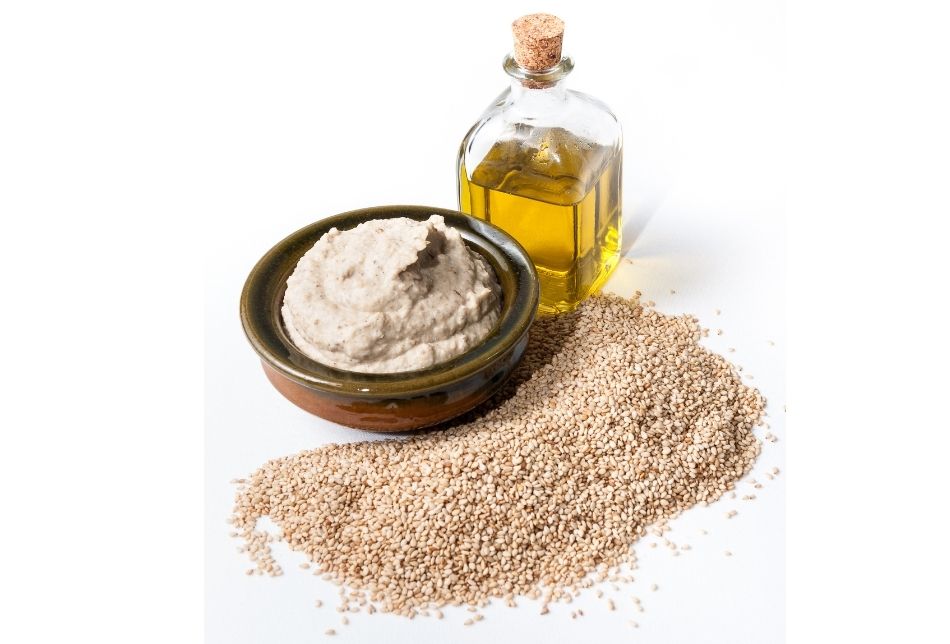
Tahini can be consumed on its own or as a key component of halva, baba ganoush, and hummus.
White sesame seeds are used to prepare Tahini sold in stores. However, depending on availability and choice, you can make it with brown sesame seeds.
Tahini is a low-calorie food but contains protein, fiber, and several vital vitamins and minerals in a sufficient amount.
34. Taro
Taro is a starchy root vegetable. It was first grown in the Bay of Bengal region of Southeast Asia.
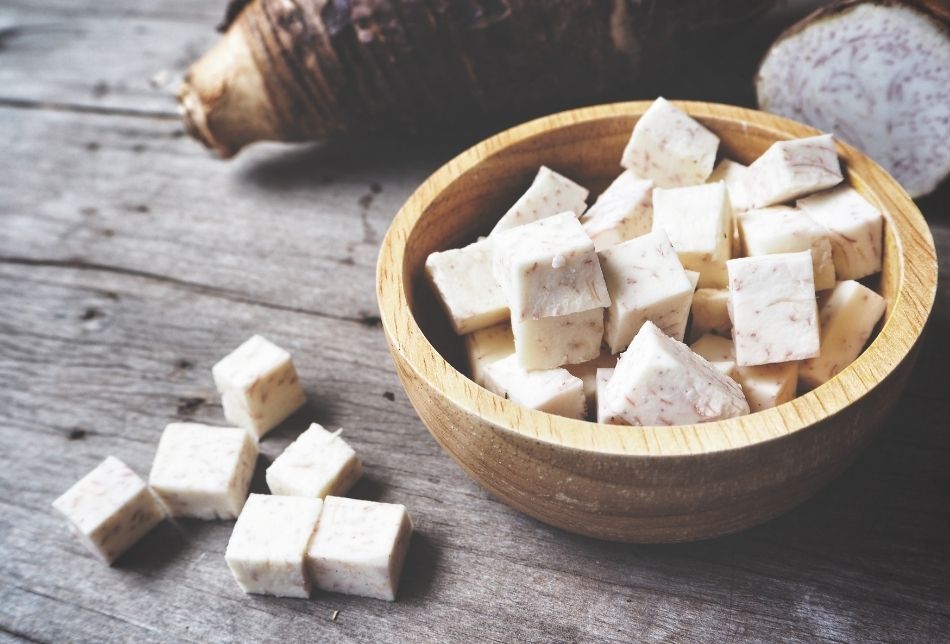
Its white flesh is flecked with purple and has brown outer skin. Taro has a similar texture to a potato and is subtly sweet.
The root contains significant minerals, including fiber, potassium, magnesium, and vitamins C and E.
35. Tofu
Tofu or bean curd is shaped by coagulating soy milk and pressing the resulting curds into solid white blocks of varying firmness.
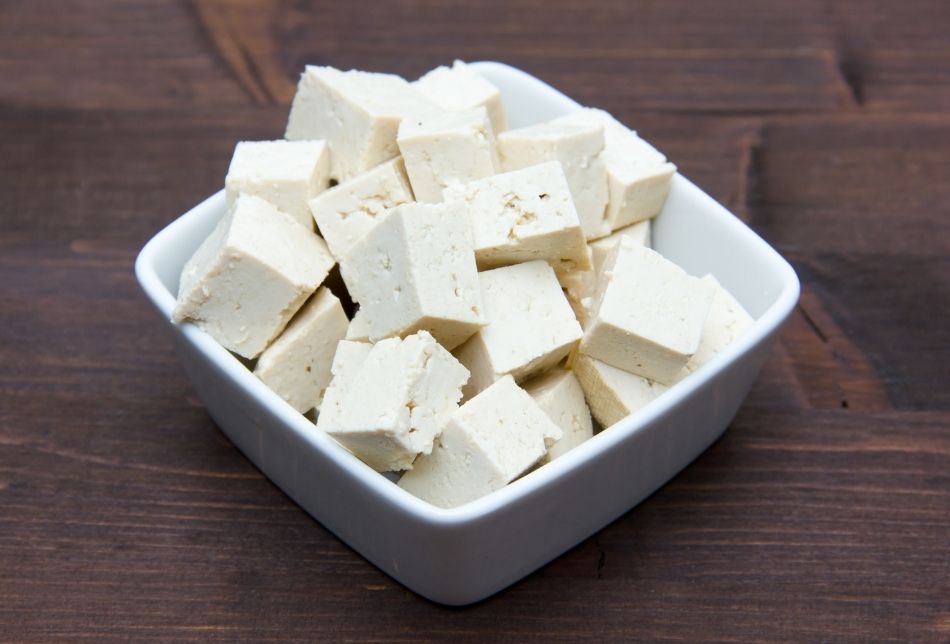
It is native to China and can be silken, soft, firm, extra firm, or super firm.
Tofu is full of protein and contains all the essential amino acids your body needs. In addition, tofu offers carbohydrates, lipids, and a vast array of vitamins and minerals.
Fact: Tofu is one of the known oldest foods in the world.
36. Turnip
Because of its white, meaty taproot, turnips, sometimes known as white turnips, are a common root vegetable grown in temperate lands of the world.
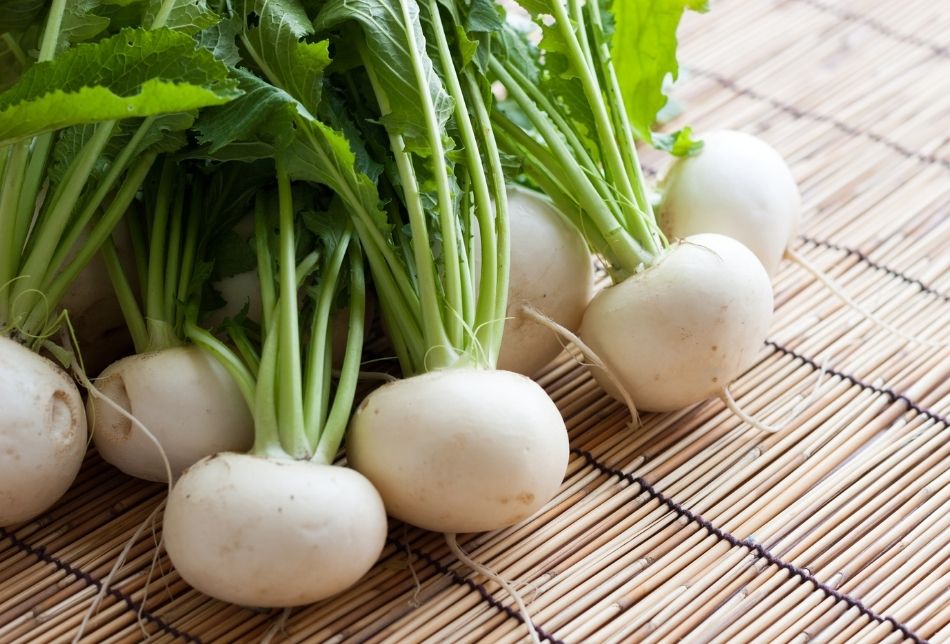
The name “turnip” is a combination of the Latin word “napus,” which refers to the plant, and “turn,” as in turned or rounded on a lathe.
Turnips and turnip greens contain more than 30% of the DV for vitamin C. The greens also include a lot of folates, vitamin K, and A.
37. Vanilla Ice Cream
Thomas Jefferson brought the recipe for vanilla ice cream from France to the United States after discovering the flavor there.
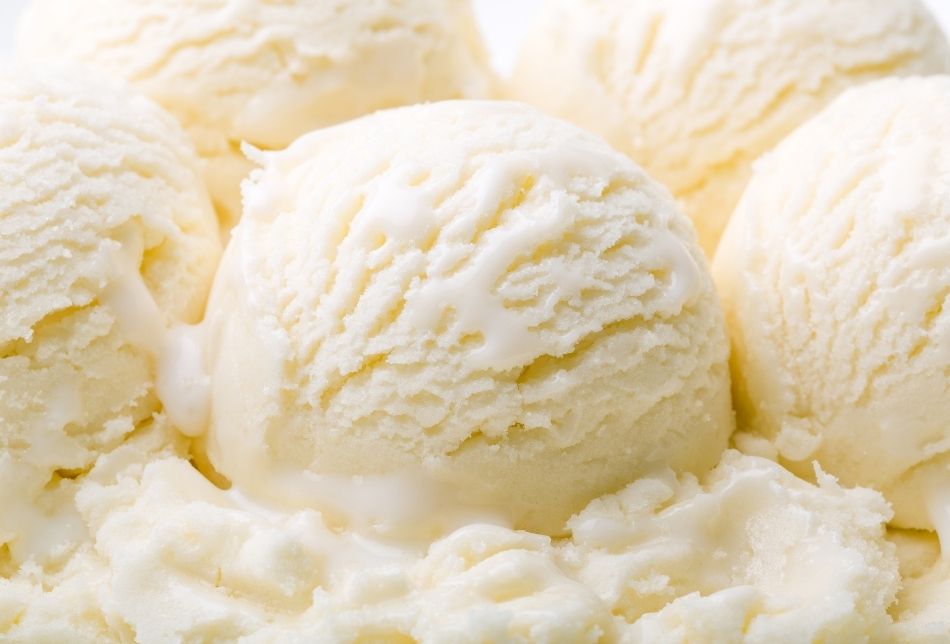
Vanilla ice cream is usually created by freezing and aerating fresh milk, cream, egg yolks, sugar, and vanilla.
Other flavors of ice cream, such as rocky road, fruit punch, and many more, are made using vanilla ice cream.
Interesting fact: It takes three gallons of milk to make one gallon of Vanilla ice cream.
38. White Asparagus
White asparagus is a type of asparagus that is grown underground. It has a sweet flavor with a hint of bitterness.
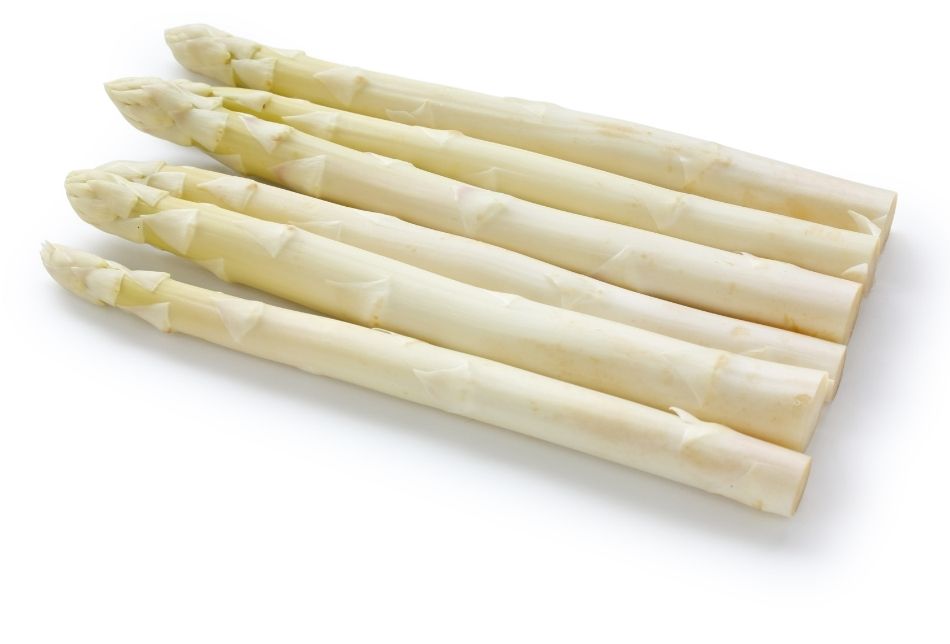
White asparagus is low in calories and is a good source of fiber. It also contains vitamins A, C, and K. One cup of white asparagus has about 20 calories. It is used in salads, soups, and pasta dishes.
White asparagus can be boiled, steamed, or grilled. Native to France, it is often served with Hollandaise sauce or lemon juice.
39. White Beans
White beans originated from several parts of America.
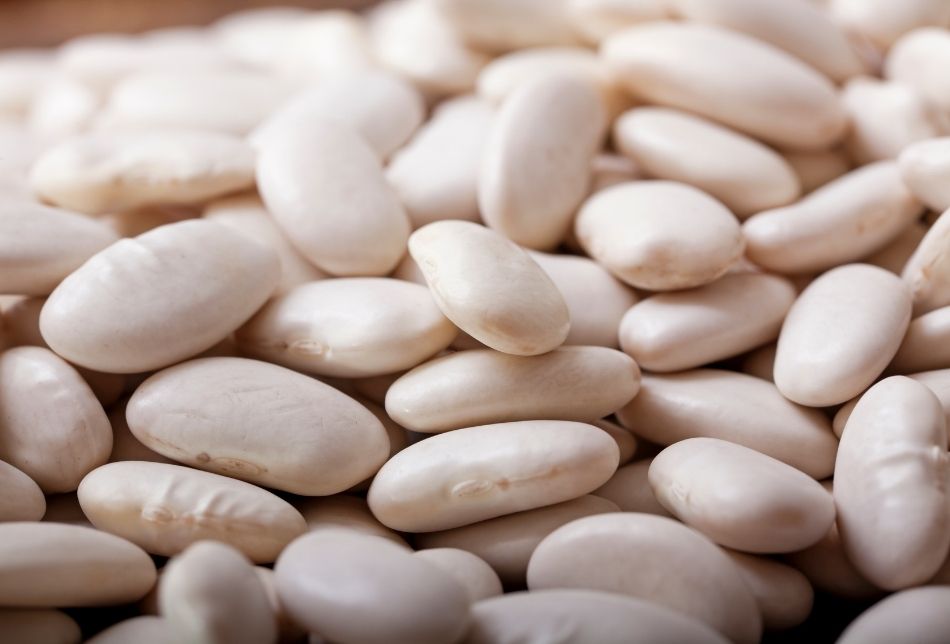
Navy beans, cannellini beans, great northern beans, and lima beans are other names for the legume that belongs to the family known as “white beans”. These have white exteriors and starchy interiors.
White beans contain a significant amount of fiber, a great source of protein, and a number of other vital elements.
Eating white beans frequently may enhance digestive health, increase muscle mass, and encourage a healthy body weight.
40. White Bread
The next white food on our list is America’s favorite bread when making sandwiches – white bread.
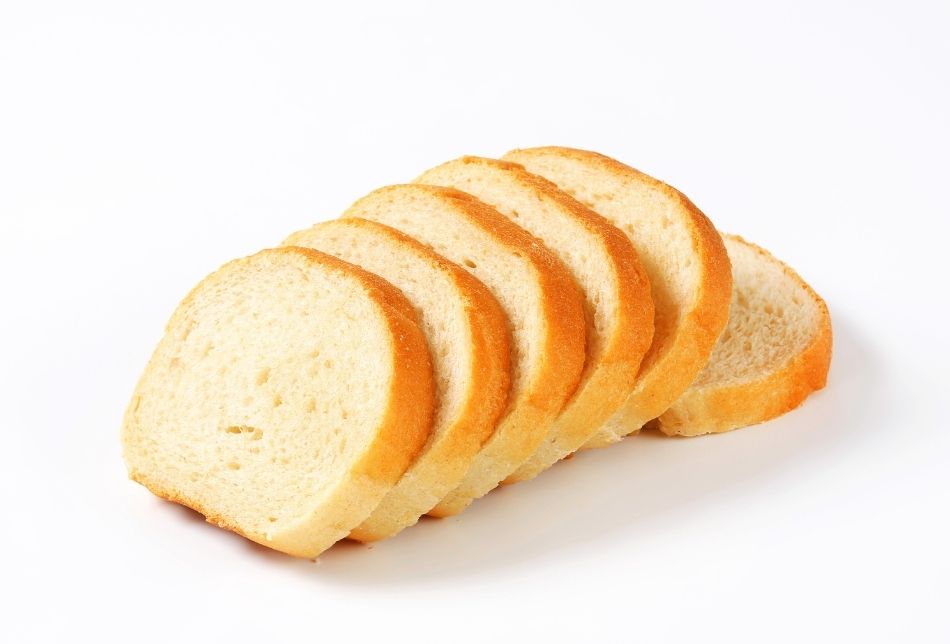
White bread is baked from wheat flour with bran and germ layers removed as part of the milling or grinding process to create a light-colored flour.
It was first made in Egypt. White bread contains carbohydrates, protein, and vitamin B.
Commercially produced white bread has a little reduced calorie count (about 75 calories per slice).
41 White Butter
White butter or Makhan (as known in India, the place of origin) is prepared from cream and fresh buffalo milk. It is a healthy source of vitamins A and D.
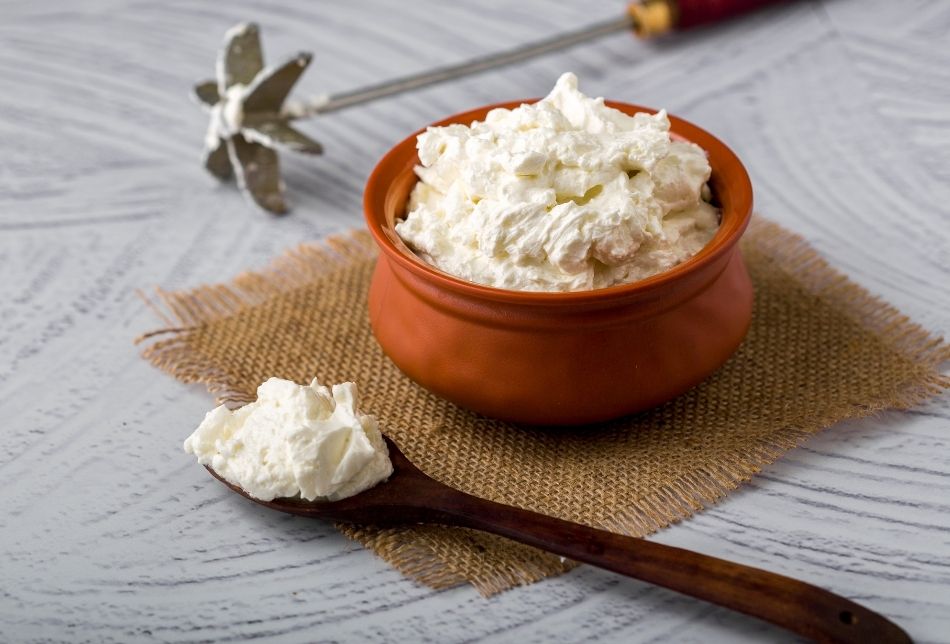
White butter is low in beta carotene and is fat-soluble and unsalted.
You can use it as a softening agent to make the dough and prepare clarified butter or flavored butter.
It contains calcium and phosphorus as well.
Fact: White butter is full of lecithin, a substance useful in cholesterol metabolism.
42. White Cheese
White cheese is a sort of cheese prepared from cow’s milk.
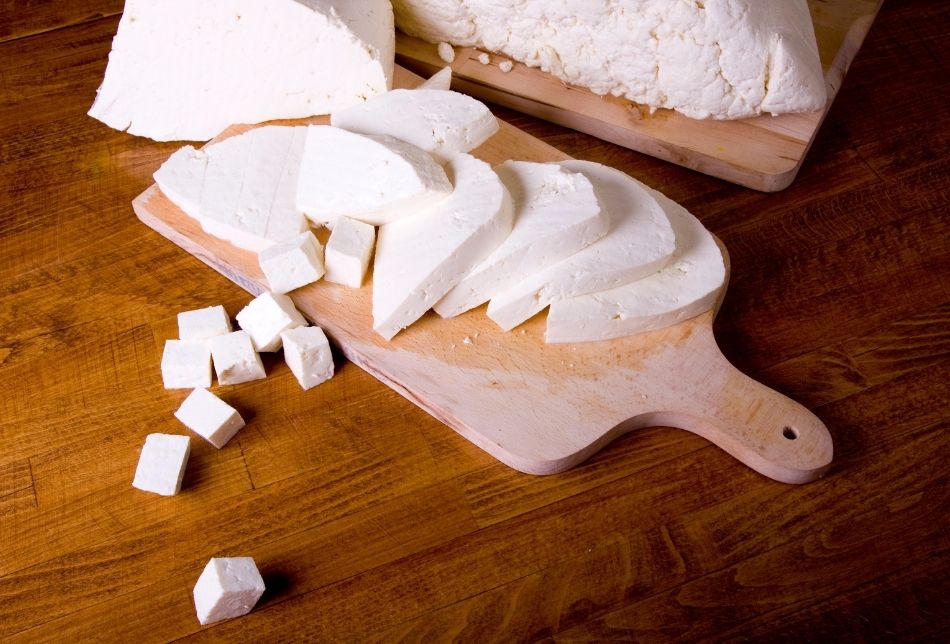
It has a flavor similar to cheddar cheese and is frequently added to sandwiches and salads.
White cheese is a powerhouse of a lot of calcium and protein. Vitamins and minerals like phosphorus, potassium, and vitamin A are also present.
The first white cheese was made in Arabia by accident.
According to an ancient legend, it’s said that a merchant put his supply of milk into a sheep’s stomach pouch as he set out on a one-day journey across the desert and suddenly found himself with some fresh dairy produce at hand.
43. White Christmas Truffle Cake
A hybrid of a cake and a truffle, white Christmas Truffle cake is one of the most opulent foods one could hope to get for Christmas. Both the cake layer and the truffle topping contain three components.
White truffles are found in the Langhe region, which spans northern Italy around Piedmont. Alba County is also home to many excellent spots for these delectable treats.
Interesting Fact: Truffles are named after the same-named fungus due to their resemblance to the dark, rumpled mushroom.
44. White Corn
White corn is classified as a fruit, a vegetable, and a grain native to Mexico.
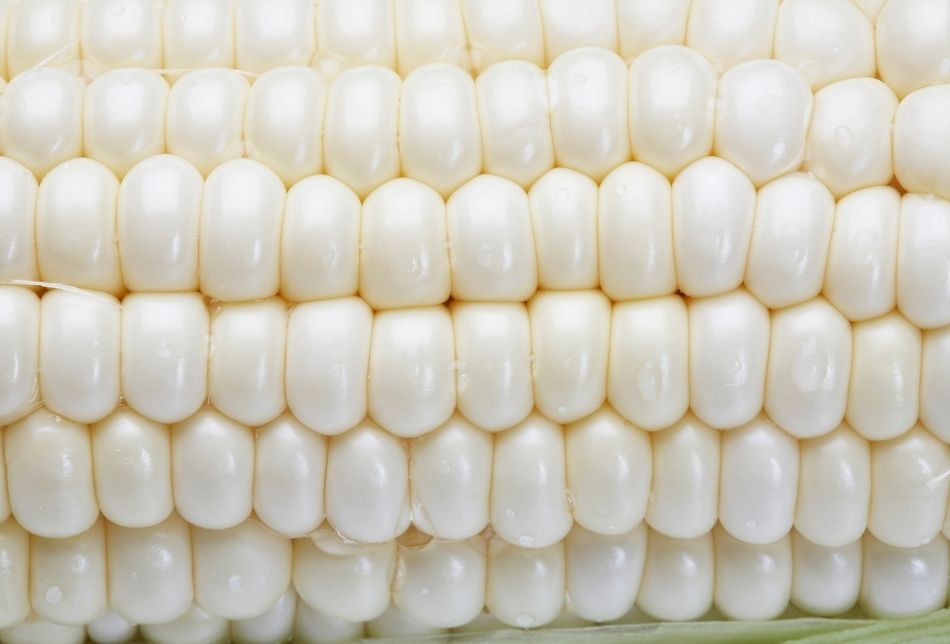
White corn is categorized as a grain because it comes from a dry seed that belongs to the grass family.
However, white corn is also a vegetable since it is picked before it is fully grown, and a fruit because maize is the part of a flowering plant that bears seeds.
White corn is rich in dietary fiber, potassium, vitamin C, iron, magnesium, several B vitamins, copper, selenium, and phosphorus.
45. White Eggplant
White eggplants, also known as Solanum melongena, are sometimes known as the nightshade family, which includes potatoes, tomatoes, and peppers.
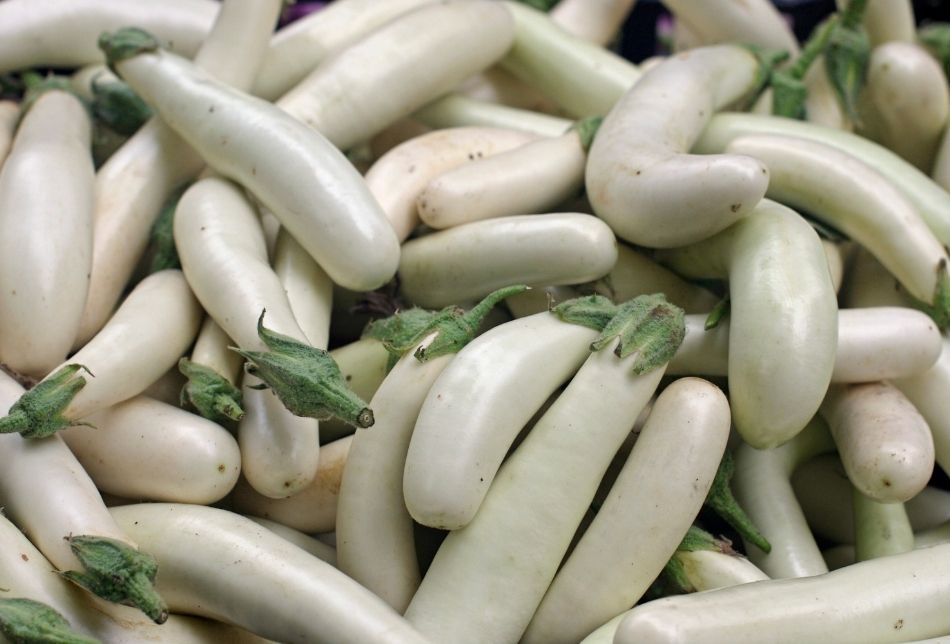
They are native to India and Bangladesh, where they have been growing since ancient times. They then spread along trade routes to Asia and Europe.
White eggplants provide some B vitamins, magnesium, and copper; white eggplants are rich in potassium.
46. White Fish
Originally from North America and Europe cold lakes, Whitefish typically has a mild flavor and is occasionally slightly sweet.
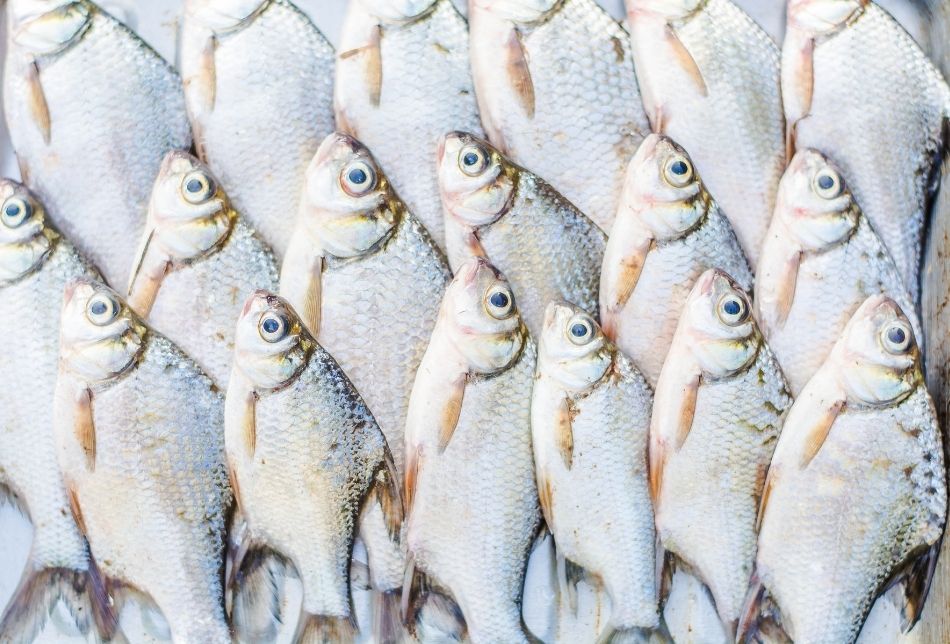
Whitefish species can be grilled, poached, steamed, sautéed, or lightly fried. A wide variety of sauces are the ideal accompaniment to them.
White fish contains the immune-supporting mineral selenium and the B vitamins B-6 and B-12, niacin, thiamin, riboflavin, and folate.
Whitefish includes several fish species, which can be used interchangeably in recipes. These fish include Wild Alaskan pollock, bass, cod, grouper, haddock, and halibut.
47. White Flour
White flour is prepared from the endosperm of the whole wheat grain. It originated in the Indian subcontinent.
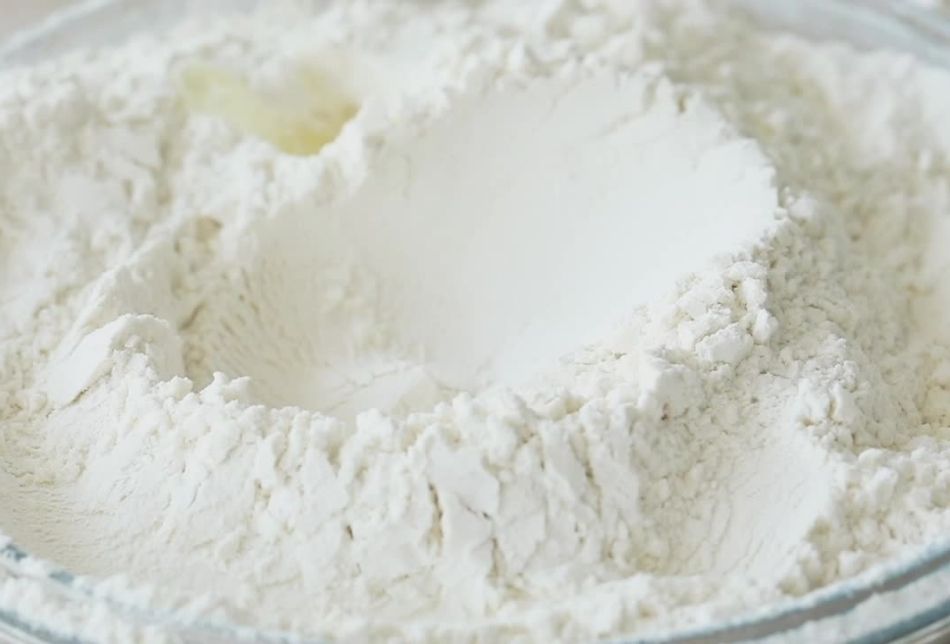
White flour is finely milled without any bran and refined with bleaching techniques to make it whiter than common barley or wheat varieties. It is used in making dough for pastries.
White flour is a source of carbohydrates and a decent amount of protein.
Fact: White flour is bleached with chlorine dioxide, potassium bromate, and azodicarbonamide gas before making the bread.
48. White Nectarines
White nectarines are small, round, oval, or heart-shaped fruits ranging from 5 to 7 cm.
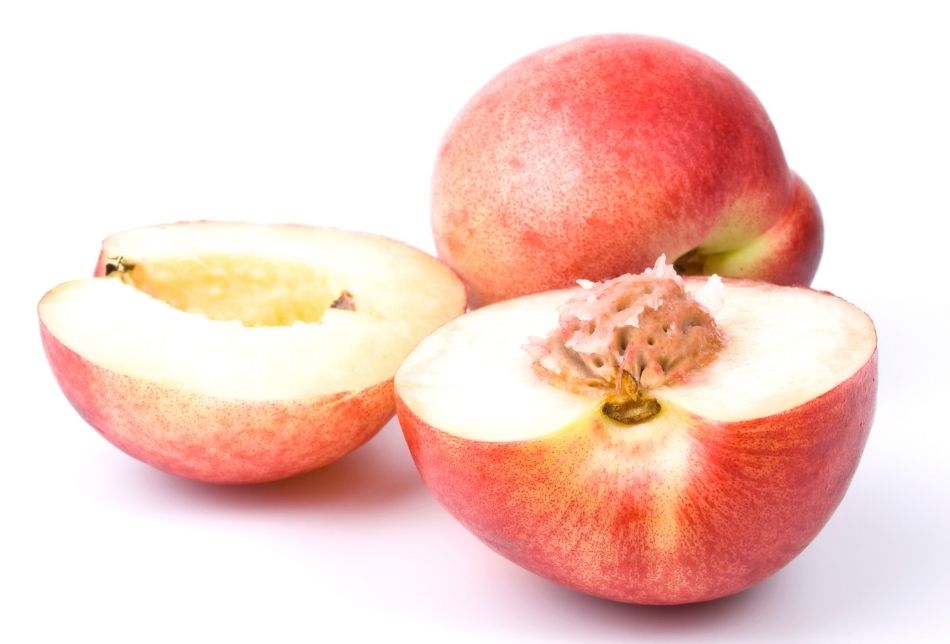
Although the nectarine’s skin can be a red-pink color, the interior of a white nectarine will be white.
Their conspicuous center seam or suture runs lengthwise from the stem to the base.
The skin of the nectarine is thin and smooth, with a white base and a red-pink flush. They are sweeter than the red nectarines with honey and vanilla nuances.
Experts believe that white nectarines originated in Central Asia and China, where they were first spotted as a natural peach tree mutation.
49. White Pasta
White pasta is pasta cooked in rich and creamy white sauce. The dish is native to Italy.
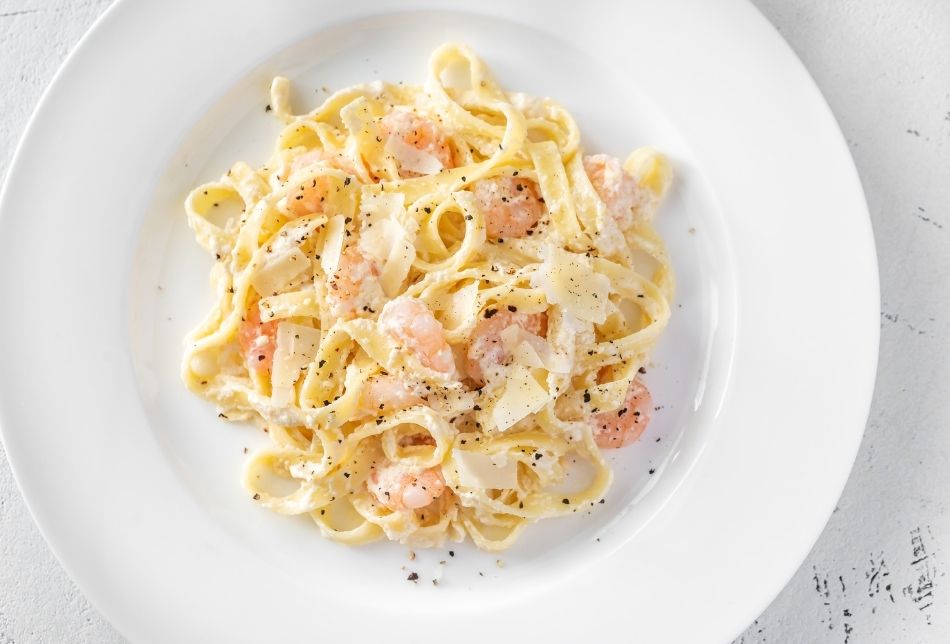
A white pasta that many Americans are familiar with is pasta with alfredo sauce.
Pasta is made using an unleavened dough of wheat flour, water, and/or eggs. The dough is then molded into sheets or various shapes and baked by boiling or baking.
White pasta contains carbohydrates, proteins, and fiber, besides minerals such as iron, zinc, and magnesium.
50. White Peach
White peach is a round fruit with a pink blush. The flesh is white and less acidic, making it sweeter than yellow-flesh peach.
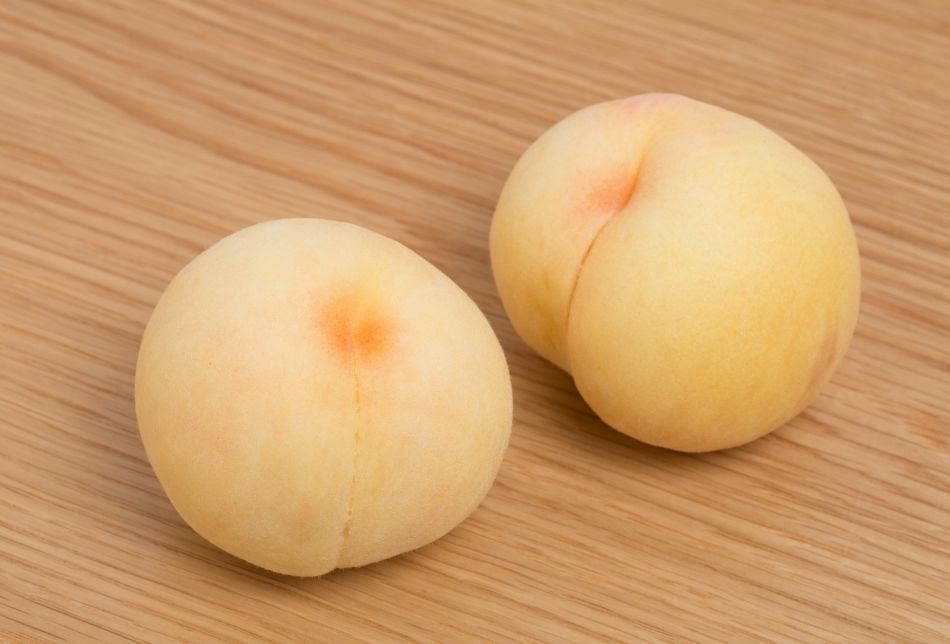
White-bodied peaches are from northwest China and offer pleasant, floral overtones.
They contain vitamin C, fiber, potassium, and iron.
Fact: It is a stone fruit and is rare in nature.
51. White Pumpkin or Ash Gourd
The white pumpkin is a squash with a gourd-like shape that belongs to the Cucurbita family.
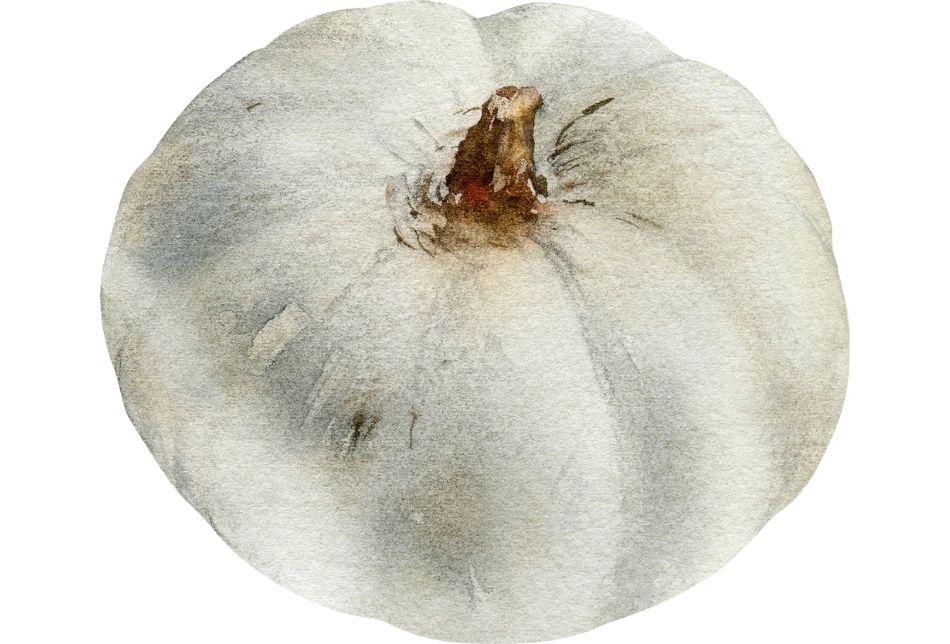
Tropical Asia is home to the fruit known as white pumpkin or ash gourd.
Its dense flesh encases a central cavity filled with pulp and flat, cream-colored seeds. The smooth rind ranges in hue from white to ivory.
White pumpkin contains vitamins C, A, B6, and K. It is also a source of fiber, which may help you lose weight.
52. White Rice
White rice is a type of rice milled to remove the outer bran layer and the germ. Next, it is polished to give it a white color.
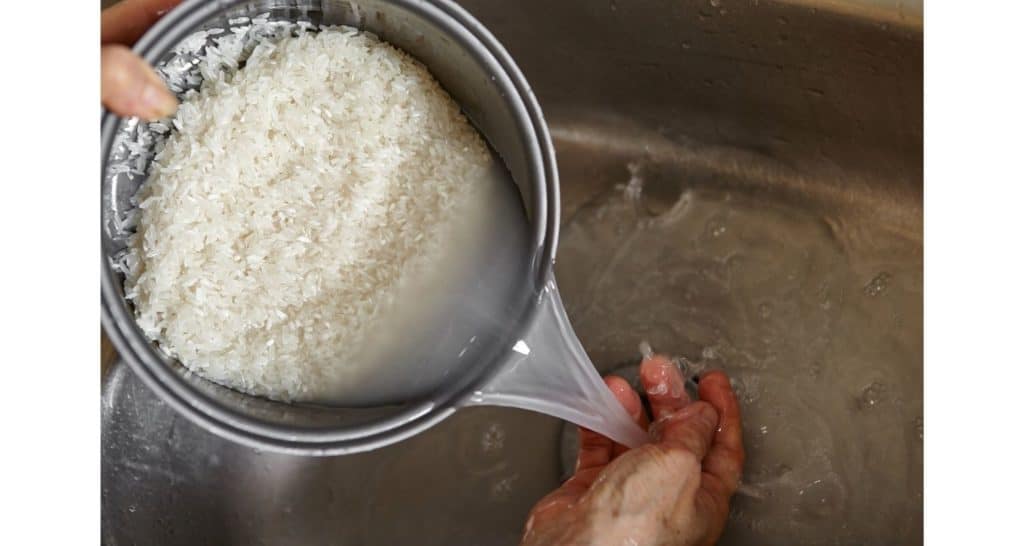
Archaeological evidence proves that rice was first cultivated in Eastern and Central around 7000–5000 BCE.
It is a rich source of thiamine, niacin, and vitamin B6. The rice also contains magnesium, phosphorus, and manganese. One cup of white rice has approximately 200 calories.
White rice can be served plain or with vegetables, meat, or fish. It is also used in making sushi and other Asian dishes originating from Japan.
53. White Sauce
A white roux and milk are combined together to make the bechamel sauce or white sauce. White roux is a paste made of white flour and butter.
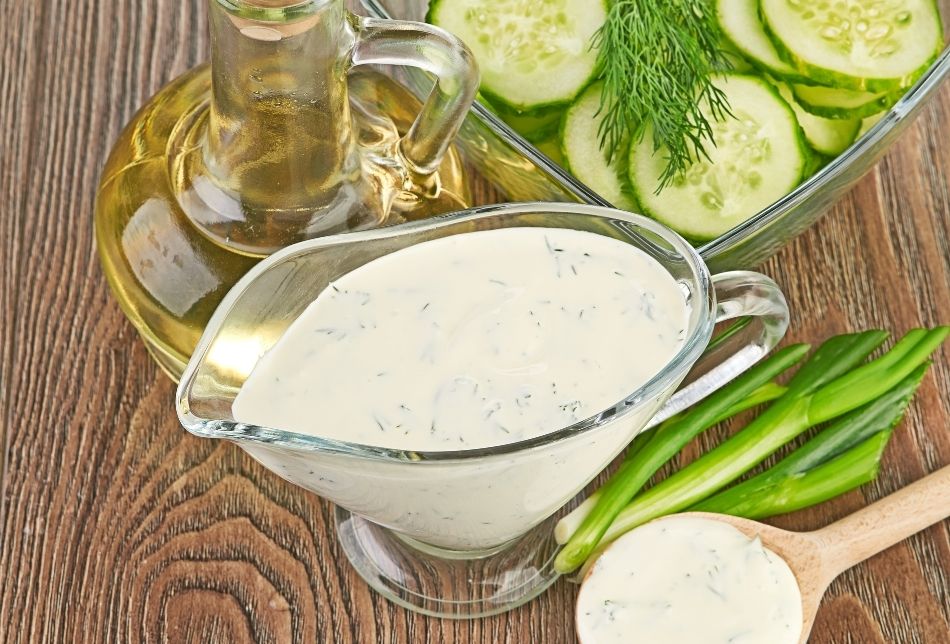
The white sauce contains carbohydrates and proteins besides sodium and potassium.
It is used to make pizza, pasta, lasagna, souffle, casserole, and other dishes.
Other names for white sauce include besciamella, besamel, and bechamel sauce.
54. White Sesame Seeds
Flat and shaped like pears, white sesame seeds are a whitish-cream color.
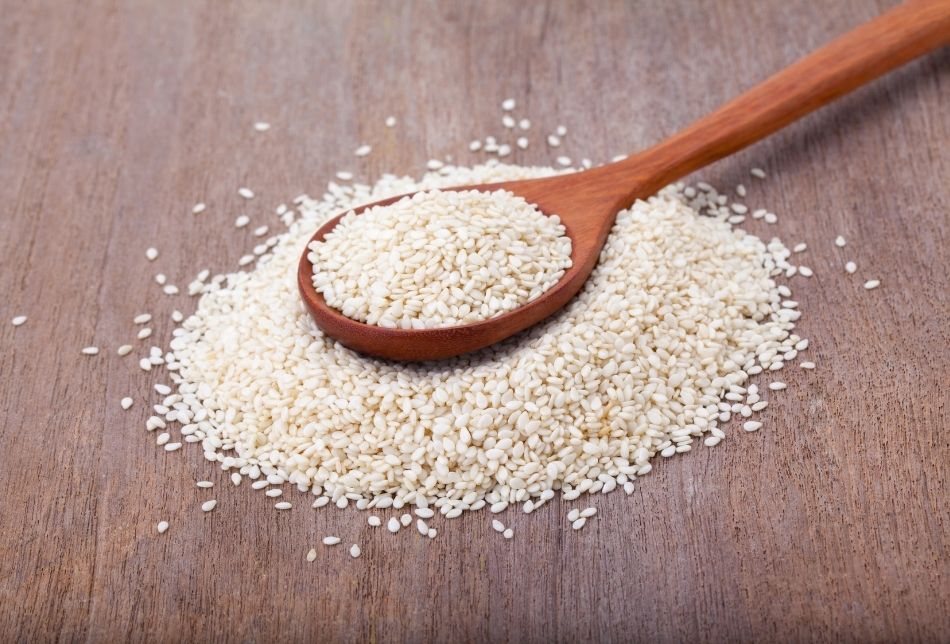
Similar to their black sesame seed counterparts, the white sesame seeds were first located in Asia.
In addition to being high in protein, white sesame seeds also contain several B vitamins, including thiamine, niacin, and B6, which support healthy cell function and increase metabolism.
You can consume them raw or roast them to make different sweets. Toasting increases their nutty flavor.
55. White Strawberries
White strawberry is a unique variety of strawberry plants.
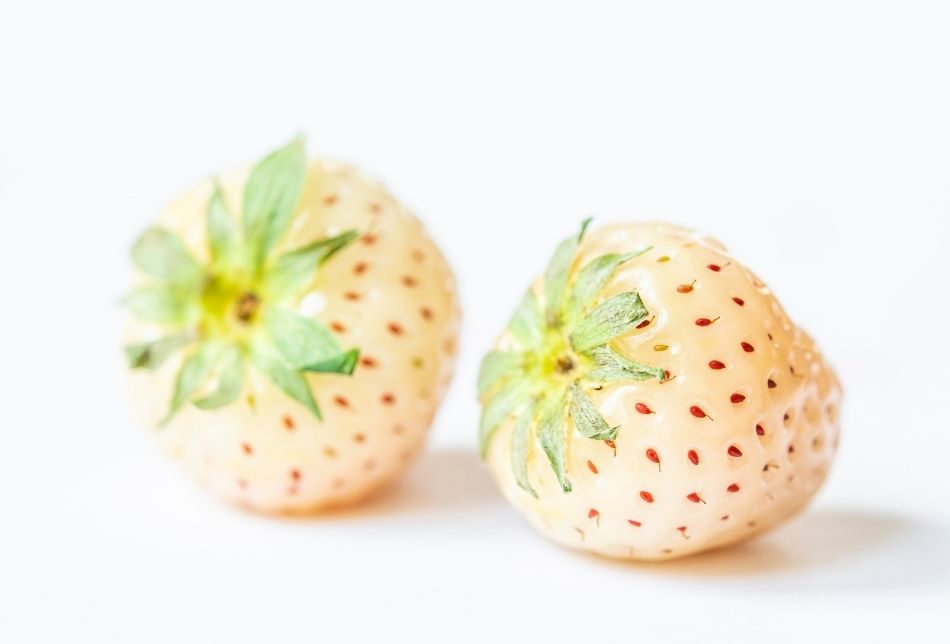
The fruit is larger than its red-colored counterpart and has white skin with crimson seeds.
White strawberries are reared over several years in Japan to develop the pale and tangy fruit.
White strawberries are a healthy resource of vitamin C, an antioxidant that boosts collagen formation, lowers inflammation, and improves the immune system.
56. White Sugar
White sugar is manufactured by granulating and refining sugarcane and beetroots through food processors.
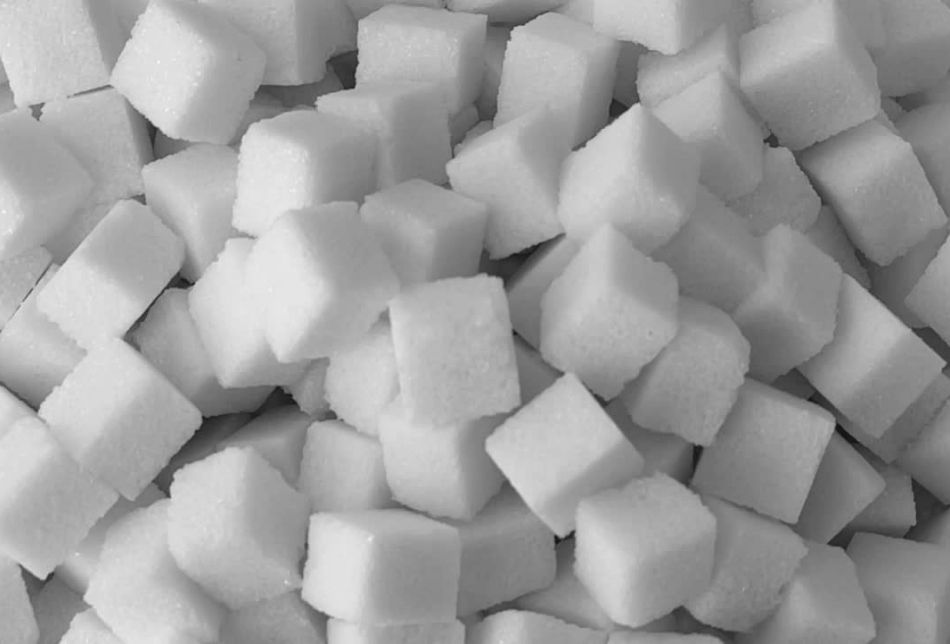
This process extracts sucrose, a natural sweetener.
Originating back 25,000 years ago in India, white sugar is the purest food that is 50% glucose and 50% fructose.
Sugar can be added to sweeten anything from cookies, tea, coffee, and cakes.
Fact: One hundred grams of white sugar accounts for 387 calories.
57. White Tea
White tea is a kind of tea made from the young leaves and buds of the Camellia sinensis plant.
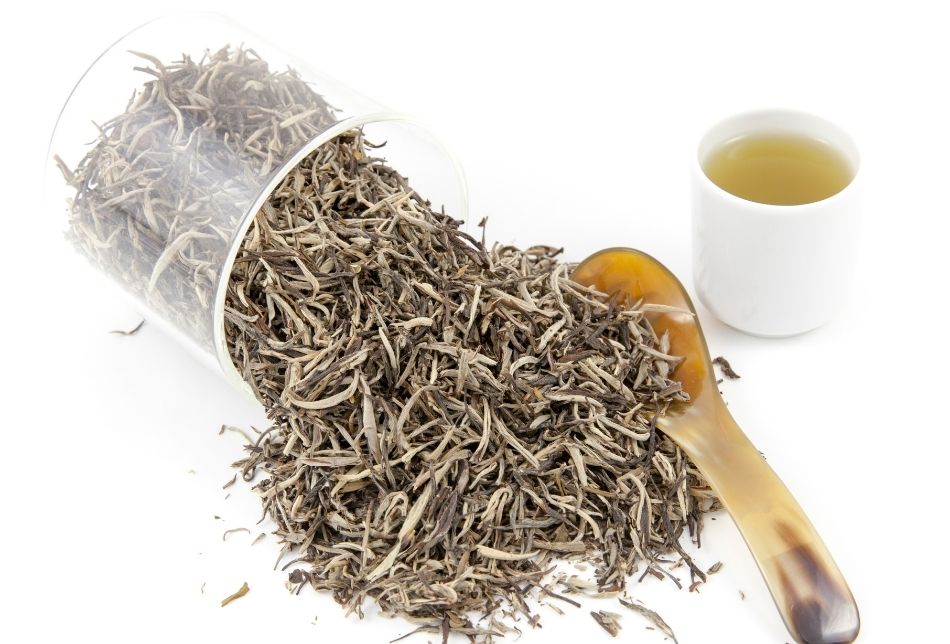
It offers a sweet honey flavor and is often used in blends.
White tea contains catechins, which are antioxidants that can help protect against heart disease and cancer. It also has less caffeine than green tea.
From delicate Silver Needles to more full-bodied White Peony, white tea has a range of flavors that are sure not to disappoint.
58. Yam
Yams are edible tubers that originated in Asia, Africa, and the Caribbean.
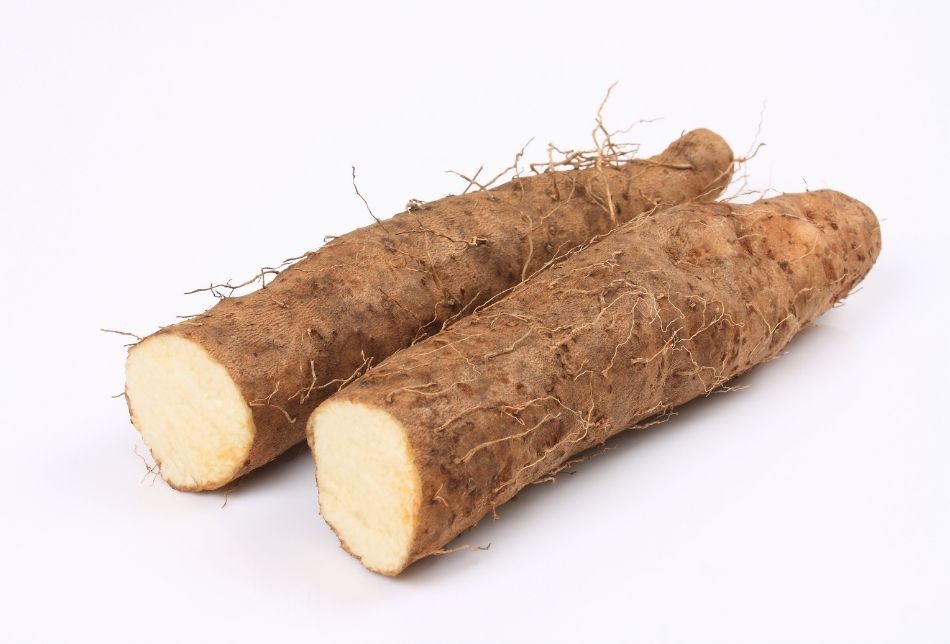
They are perennial herbaceous vines grown for the starchy tubers they produce.
Yams have a white edible section and a brown skin. They are a resource of fiber and are also high in potassium and manganese.
Fact: A yam can grow up to 100 pounds.
59. Yogurt
Yogurt has its origins in Turkey. It is a dairy product molded from milk that has undergone bacterial fermentation.
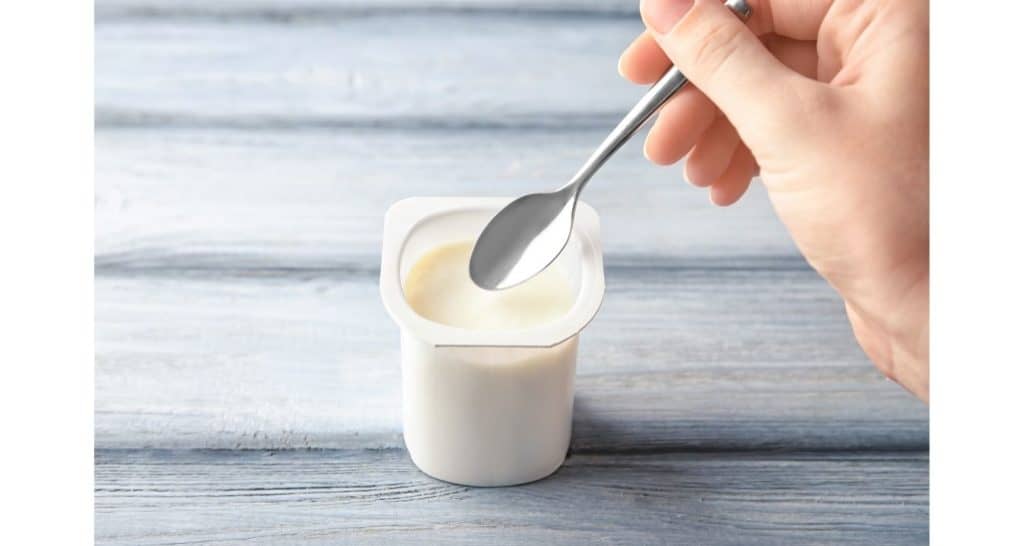
Protein, calcium, vitamins, live cultures, or probiotics, are found in high concentrations in yogurt.
These protect teeth and bones and guard against stomach issues.
On a plan to lose weight, low-fat yogurt can be a valuable source of protein. Not to mention, probiotics help to strengthen the immune system.
60. Yuca
Yuca is native to South America. It is also referred to as cassava or manioc and is one of the most adaptable crops in the world. It is a starchy tuber with a nutty flavor.
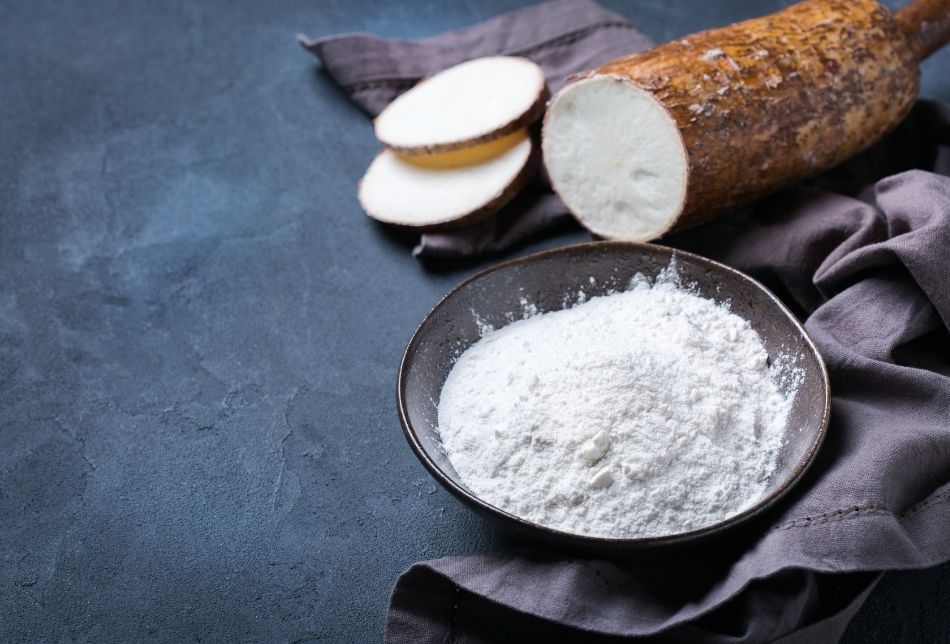
You can fry, boil or mash yuca before eating.
The resistant starch found in it is regarded as a useful source for maintaining a healthy digestive tract.
Yucca contains calcium, dietary fiber, potassium, and vitamins C and B.
Fact: Yucca or yuca root powder is also used in the pharmaceutical industry.
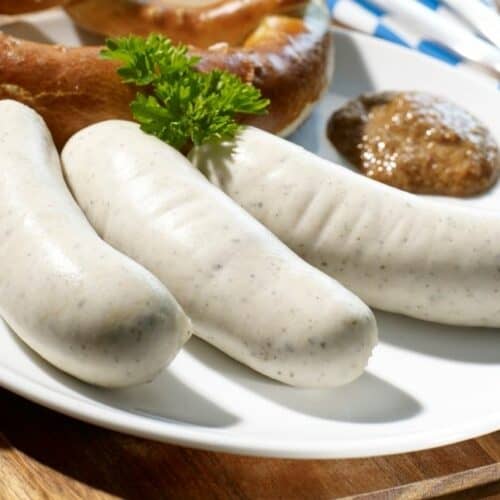
Foods That Are White In Color
Ingredients
- Almonds
- Almond Milk
- Animal-based Fats
- Bananas
- Bavarian Veal Sausage Chain
- Black-eyed Beans
- Cashew Nut
- Cauliflower
- Chickpeas
- Clarified Butter (Ghee)
- Coconut Meat
- Coconut Milk
- Daikon
- Egg Whites
- Garlic
- Honey Lavender Popsicles
- Jicama
- Kefir
- Kohlrabi
- Lean Chicken
- Mayonnaise
- Milk
- Mushrooms
- Oats
- Onion
- Parsnip
- Pears
- Popcorn
- Potatoes
- Roasted Pumpkin Seeds
- Salt
- Sorghum
- Tahini
- Taro
- Tofu
- Turnip
- Vanilla Ice Cream
- White Asparagus
- White Beans
- White Bread
- White Butter
- White Cheese
- White Christmas Truffle Cake
- White Corn
- White Eggplant
- White Fish
- White Flour
- White Nectarines
- White Pasta
- White Peach
- White Pumpkin or Ash Gourd
- White Rice
- White Sauce
- White Sesame Seeds
- White Strawberries
- White Sugar
- White Tea
- Yam
- Yogurt
- Yuca

